Guest Post by Melne Murphy
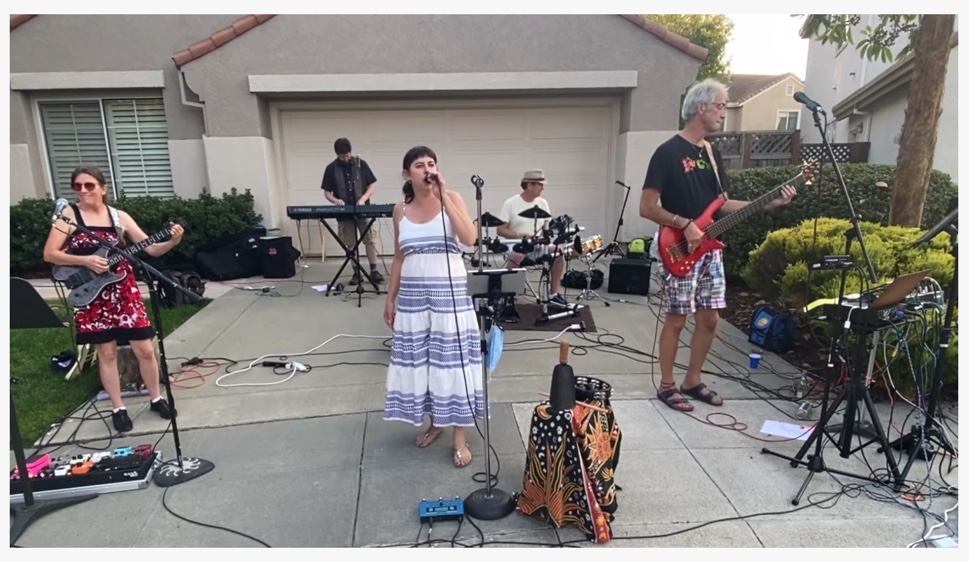
At the onset of the pandemic lockdown in March, someone in Alameda, CA started a series of “porch concerts” to help people cope with the shock of such a lifestyle change. Every Friday at 6, musicians all across the island would gather on their porch or driveway “stages” and play for an appreciative audience of their masked and socially-distanced friends and neighbors. With no options to see live music, this became a very popular event. Since the town is small, one could easily walk or bike around and see all kinds of music. Soon the event unofficially expanded to include weekends, as well, and starting in July, I began to play at these shows (I am a guitarist). On Sunday, September 13, after finishing my gig at 6pm, I loaded my gear into the car to drive the 8-block distance to home.
Halfway there, at the block where I turn, I spied on the corner two obviously not-feral pigeons walking casually on the sidewalk opposite. One white, one dark—mottled grey and white.
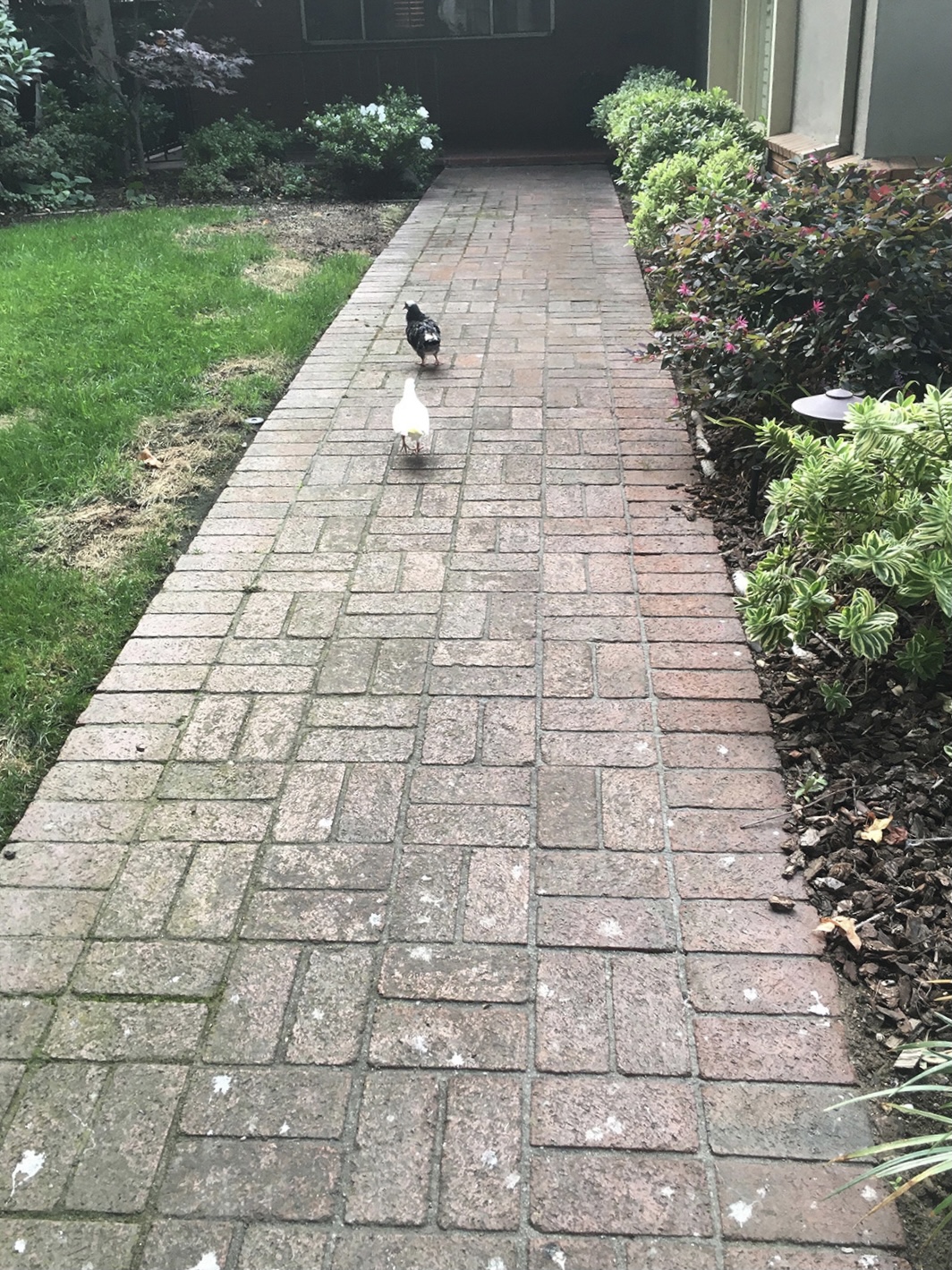
Pigeon kids on the loose
I knew they were out of place, and my mind raced to what I should do—I certainly could not just leave them there. I pulled the car over and hopped out with the jar of pigeon food that I keep there in case I see any needy or hungry pij-friends while I’m out and about.
As I approached the two pigeons, I could see that they were just babies. The dark one’s wings were not even fully grown in yet! My mind began to calculate how to capture them, so I threw some food, but unbeknownst to me, they were still too young to recognize the grains and seeds as food. They ignored it, and continued to wander around, pecking at this and that.
Now, how do baby pigeons just happen to be wandering around aimlessly on a street corner? Well, just across the estuary from Alameda in Oakland there is a live poultry mart where people can buy chickens, ducks, and baby King pigeons (e.g. “squab”) for their dinner plate. Unfortunately, people—well-meaning or perhaps those who lost their nerve to go through with the butchery—frequently purchase and then abandon these birds—often in parks or parking lots.
Perhaps they think they are “freeing” the birds to have a happy life in the wild—but instead they are likely dooming them to a much worse death than they would have experienced otherwise. Alameda has an extremely healthy population of cats–both free-roaming pets and feral–raccoons, skunks, opossums, Cooper’s hawks, crows and a plethora of rats. So, abandoning baby pigeons here is pretty much a death sentence for the birds.
What these well-meaning (or otherwise) people don’t realize is that their squab purchase can’t fly (or, even if they can, not well). They are likely still dependent on their parents’ feedings, as well as the fact that they are domestic and unequipped for life in the wild in every way- physiologically, experientially, completely. These birds are more than likely headed toward a grisly death at the claws, beaks and teeth of predators or under the wheel of a passing car.
So, here I am, with the sun low on the horizon, faced with two little baby pigeons that stand almost no chance of surviving the night. The two were obviously friends, as they were sticking close together. As I followed them down the sidewalk, they would scoot away, at times running into the street, where I had to quickly cut them off to shoo them back on the sidewalk for safety. They weren’t frightened of me—just wary. I could get within a couple feet of them. They had to be caught!
I contacted Elizabeth at Palomacy for advice, and we kept in contact via text through this mission.
Not only was catching them a problem, but so was transporting. I had a car full of music gear—and not anything to put birds in—but then I remembered that wildlife rehabilitators at Wild Bird Fund in NYC recommend putting injured birds into a brown paper sack and folding over the top to secure them. The paper sacks are breathable and are a simple and readily available solution to transporting small creatures. And I had some brown paper grocery bags in the car!
The pigeons were now wandering onto the property of the corner house, and I hoped the owner wouldn’t be angry or frightened if they saw that I was hanging around for a long time around their house.
The only thing I had to catch a bird with was the light sweater I was wearing. As the birds wandered up the home’s walkway path, I thought that the walls of the house and its nearby landscaping *might* just offer an advantage to catching them. I tried for the dark one with the stubby wings first. He was an easy catch! I was able to swish the sweater around the front to block his forward motion, and then pounce! I got him! When I unfolded the sweater to get a look at him, he was so young that he was still naked under the wings. I loaded him into one of the paper bags, folded the top and took him to the car. One down, one to go.
Catching the white one proved to not be so simple—this bird could fly. She was now wandering around the front yard looking for her friend. Edged in by the hedge, I thought I had a chance—and missed. She fluttered clumsily and landed in a low bush, wings spread and struggling–it would have been an easy catch, if I could have just gotten there a half second earlier. My fingers touched her feathers just as she fell through the branches to the ground and took off running through the landscaping. I stumbled through the shrubbery trying to get her, missing each time by millimeters. When she got into a clear area, she flew. To the home’s roof. Crap.
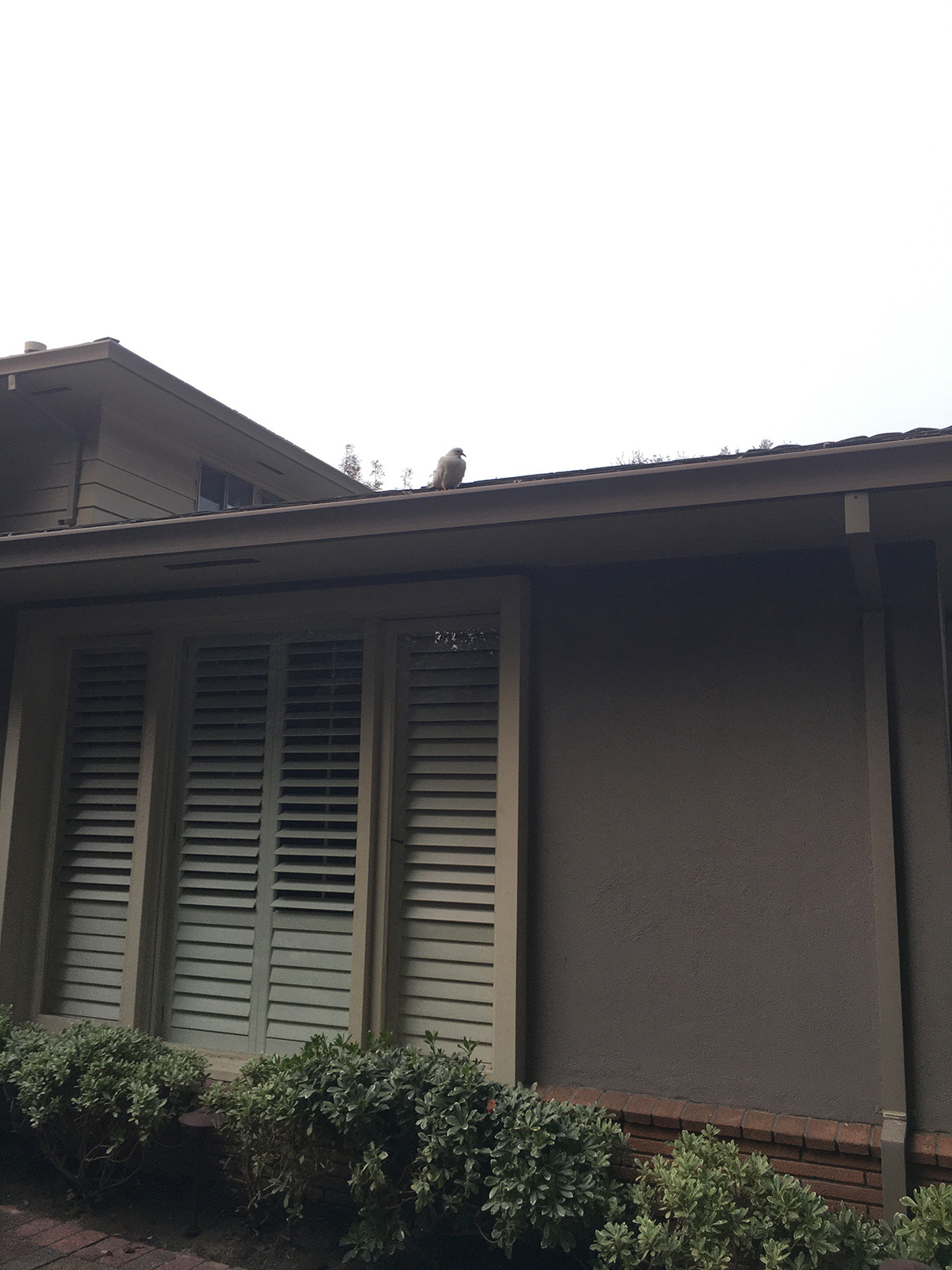
Shirin on the roof…
By now it’s getting late into the day, the sun is getting really low, and here sits this bird, 8 feet above me, preening. Texting with Elizabeth, she suggests tempting the white one down from the roof with the sight of her little friend. With trepidation, I go and get him out of the paper bag, and holding tightly, sit down on the edge of the lawn in her view, making sure she can see him, but also making sure he doesn’t escape. She was unmoved, so after about 15 minutes, I decided to get him safely back into the car.
At this point, we discuss waiting until dark and trying to get her with a ladder and net. Elizabeth has put out the call and recruited a fellow local Palomacy person, Caitlin, who was going to bring a pet carrier and try to help me with the catch. My phone is old, and I noticed the battery was running low from all this texting. I couldn’t risk the phone going dead, since communication about the situation was important, so I went back to my car and plugged it in to get a little boost, and then went back to watching the bird.
The new ladder-and-net plan meant I had to knock on the door and ask the homeowner for permission. The elderly couple who lived there were a bit skeptical about the idea, but Mr. & Mrs. came out and had a look at the pigeon, sitting on their gutter, and gave us permission, as long as they were able to supervise and watch us carry out the caper.
And so I sat, and waited and watched, as White happily sat preening in the fading light, watching the crows fly en masse to their rookery. I worried about a late-day hawk picking her off the rooftop for a bedtime snack, and I wondered how we’d ever catch her.
And then she flew! She landed in a small curbside tree. And flew again! SHE LANDED ON THE ROOF OF MY CAR, and stood there, tauntingly, pecking at the dirt on the roof. I approached, opening the door and mentally trying to WILL her to do me a favor and fly INTO my car. So frustrating to stand there, inches from the bird, with no real way to catch her. She was SO close to rescue and safety with her best buddy. Suddenly she flew again, back across the street. This time to the high second-floor roof of the same corner home. No way to reach her there. The light was fading, and I sat on the curb in front of my car, watching her.
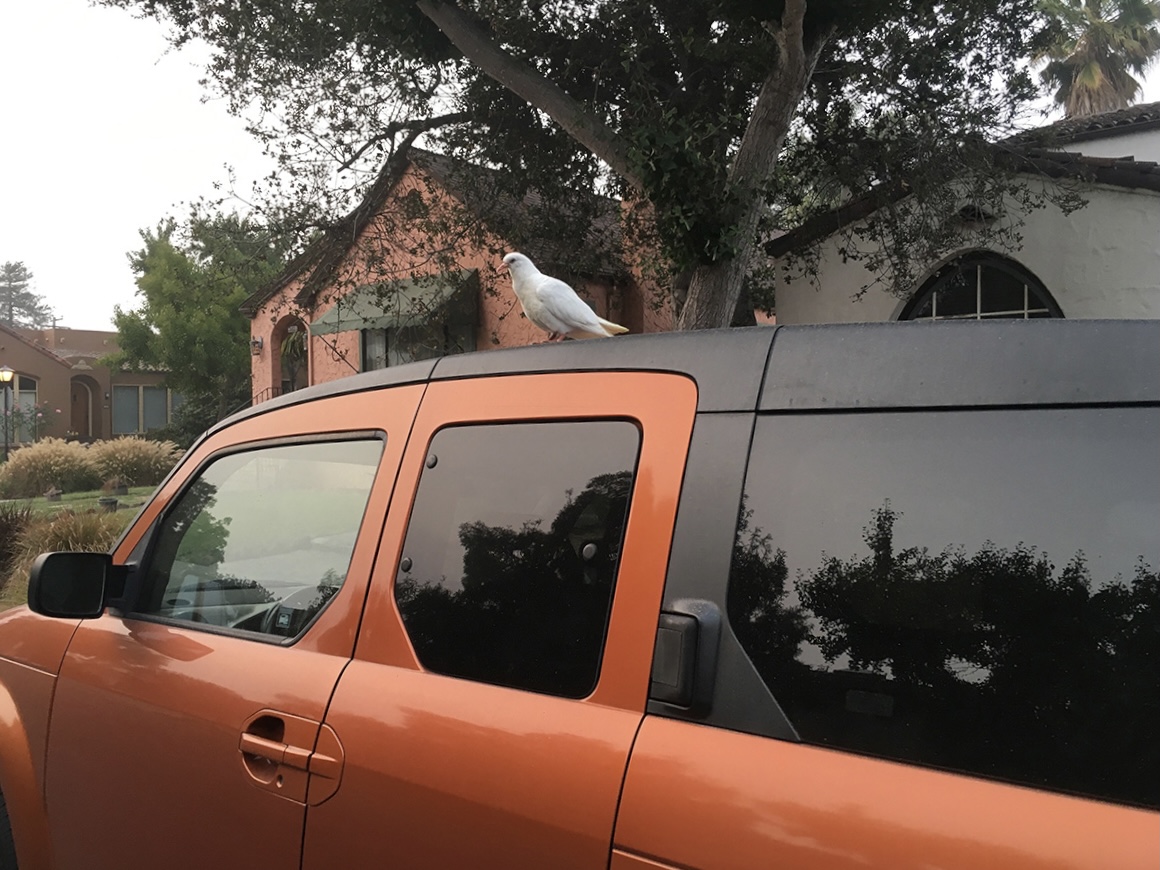
Shirin on my car!
Just then, Caitlin drove up, bringing a pet carrier and we commiserated about our seemingly impossible situation. Mr., the homeowner, shuffled out of his house to see what was happening, and forbade access to the upper roof (not like I would have attempted– I am terrified of heights!). He did try to help, though–he went back inside and upstairs, and tried to yell the bird off the roof! But she just sat. It looked more and more like she was settling in for the night.
But then she flew! This time onto a high branch in one of the mature trees that line the street—a good 15′ up. We couldn’t decide how to proceed, or if we should do anything at all. We did try to dislodge her—hopefully prompting her to fly down somewhere accessible—by lobbing some (unused) baby diapers that Caitlin had. Neither of us could toss them high enough, but we did get a pretty good laugh out of the absurdity of the act. We decided to give up for the night and try to find her again tomorrow. It was, by then, getting truly dark, and the bird was likely safe, at least from ground-based predators.
We bade farewell and got in our cars. I transferred Dark into the pet carrier that Caitlin had lent me. She drove off, and I sat there for a few minutes writing a text before leaving for home. Remember that my phone was low on juice and I plugged it into the car? Well, I had forgotten about the phone for at least an hour. Ready to go, I put the key in the ignition and turned it… NOTHING. Crap. The phone had drained the car battery. Arrrggghh! (lesson learned).
I tried it again. No dice. Well, I’m four blocks from home, no big deal. Worst case, I can leave the car here, walk home, come back with a rolling cart and bring my music gear home that way. But I would rather get the car and its contents home tonight. So I opened up my AAA app and requested help. That’s what I pay them for, right? The app says it will take about 20 minutes to find a service truck to assist. OK, no biggie. I sat for 10-15 minutes and checked the AAA app again. They still hadn’t dispatched a truck. Grrr.
Well, if no truck was imminent I figured I would go check on White while I waited. I walked over to the tree she had settled in—and SHE WAS GONE! Crap! I looked around and saw nothing, but suddenly from behind came a fluttering of wings, and she flew back to the lower roof where she’d first sat! She only sat there for about 5 minutes, and then flew to the ground under the streetlamp, just a few feet away! OMG, this was my chance! I now hoped that AAA wasn’t suddenly going to show up.
So I took off my sweater again and slowly approached. She walked toward a hedge that might help deflect her, so I tried to swoop my sweater around her. Fail. Spooked, she flew to a curbside tree across the street.
She really seemed as though she didn’t quite know what to do with herself in the gloom—at this point it was fully dark except for the street lamps. She only alighted briefly in the tree and then flew back across the street to another tree. (SO FRUSTRATING!).
Then, she fluttered from the tree down to the pavement. In the middle of the street. Thankfully, no cars were coming. She walked toward the space between my car and the one in front—and it was pretty dark right there. I decided THIS was the opportunity—before she walked underneath the parked car. I swished my sweater around her front and pounced! As the sweater and my hands enveloped her, she let out a little baby pigeon squeak. She almost wiggled away, but I GOT HER! Shaking with adrenaline, and clutching my prize tightly, I got back in the car, and felt a great relief and triumph. I slowly extracted her from my sweater, and popped her in the carrier with her little friend. I’m sure she felt a bit of relief seeing her buddy after that terrifying incident.
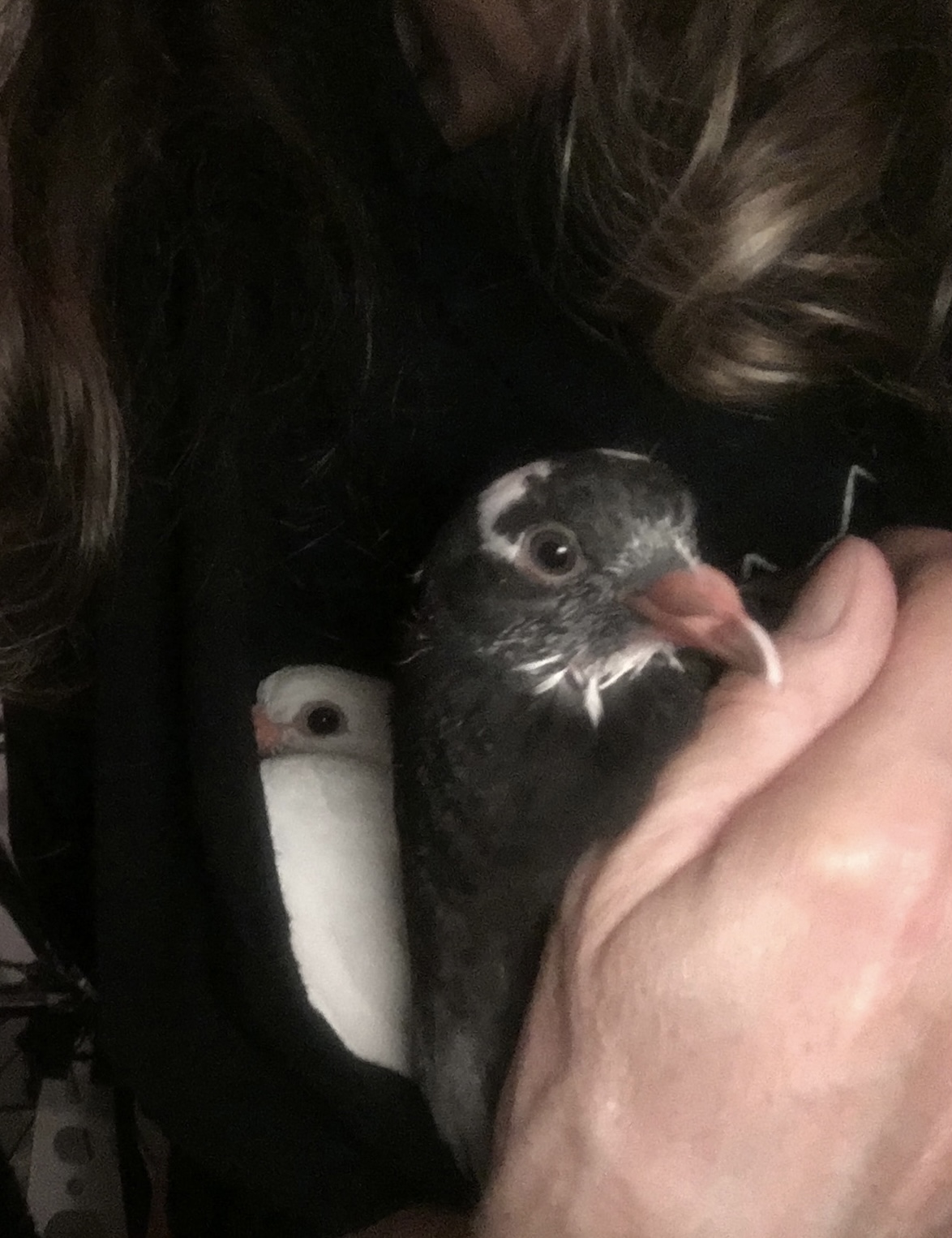
SAFE!
Well, now I just needed to get home! Check AAA. They *STILL* hadn’t gotten me a truck. At this point, I’m thinking of alternative options, since I now needed to get these baby birds home and help them.
I went back to the idea of leaving my car overnight and dealing with it in the morning and just getting the birds and my music gear home with the cart. But before giving up, I thought I should try the car one more time, now that its battery had had a good 30+ minute “rest.” And, OMG, it started! It was a stodgy start, but the engine turned over, and was running! Yay! I cancelled AAA. BUT…still can’t go home yet. I know that after your battery has died, you need to drive around for a while to charge it back up. So I texted my friend Moe to find out how long I needed to drive. He said 15 minutes. So, instead of being able to just drive the four blocks home, I had to drive around for 15 minutes. So I took the “scenic” route (not scenic, really, it was dark!) and drove the 5 miles across the island and back with my new little friends.
I didn’t mind, though, because the birds were SAFE!
When I finally got home, I offered them a drink of water infused with a pinch of salt and sugar—both birds were SO thirsty and thawed some peas. At first they seemed resistant to the peas, but as soon as the first pea crossed their tongue and was swallowed, it opened the floodgates to all the baby pigeon flapping and squeaking glory! I fed each about 10 before letting them rest for the night. And so, I became a pigeon mom.
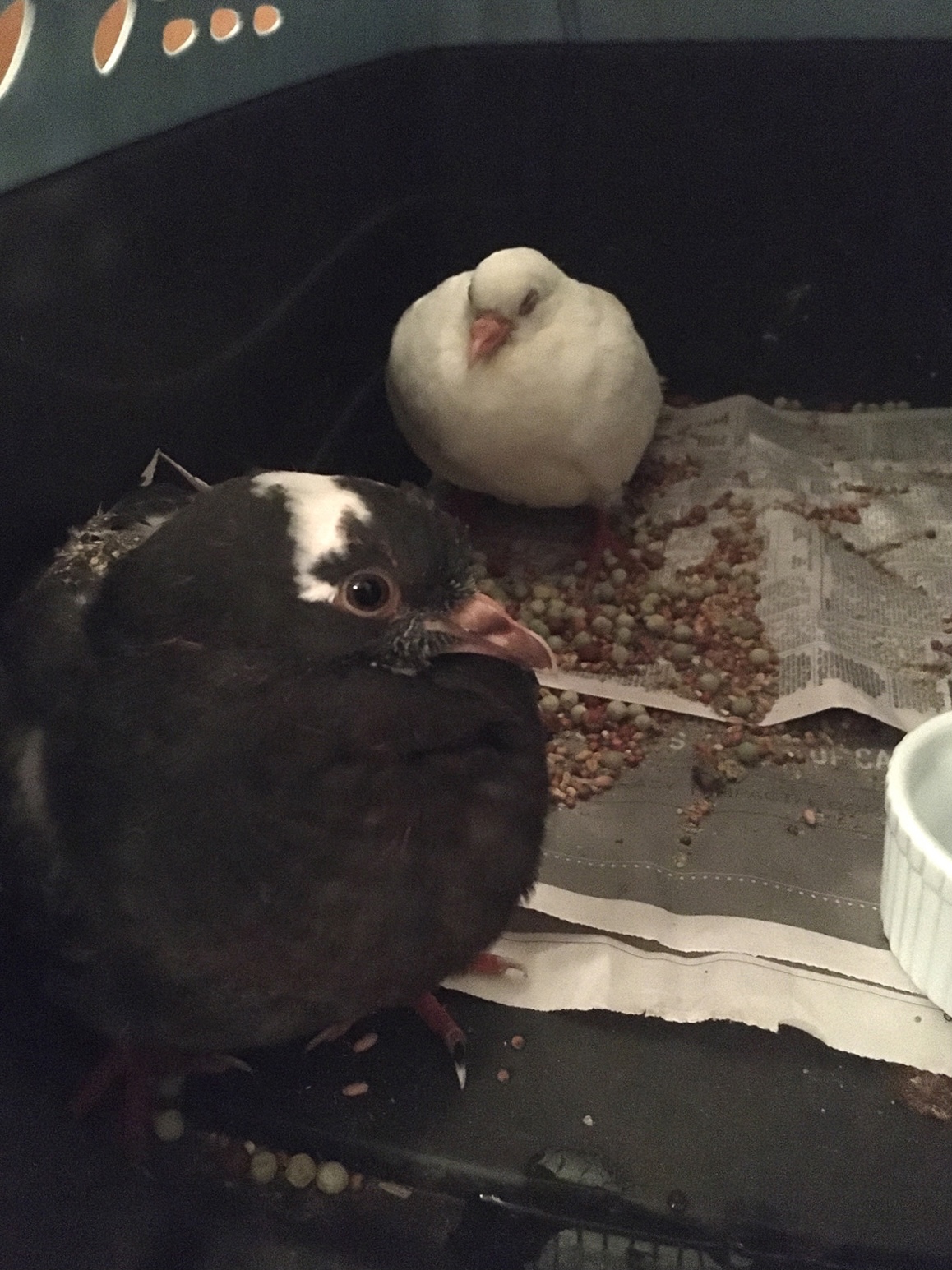
Safe, exhausted pigeon kids
The next morning came the first actual feeding—I didn’t have any baby bird formula, but I did have a vitamix blender, so I DIY’d it. I took 50% wild dove food (for my outside birds), and 50% Harrison’s Lifetime Bird Food pellets (for my conures), tossed in a handful of peas and whipped up some DIY baby pigeon food. I was suddenly thankful for my annoying habit of saving jars and bottles, because I had a salad dressing bottle that would work great as a feeding bottle. I rubber-banded a stretched nitrile glove over the opening and opened a slit with an X-acto knife. Thus began two weeks of very messy baby feeding. They both took to the bottle well, and I weighed them after each feeding and in the morning to monitor their consumption.
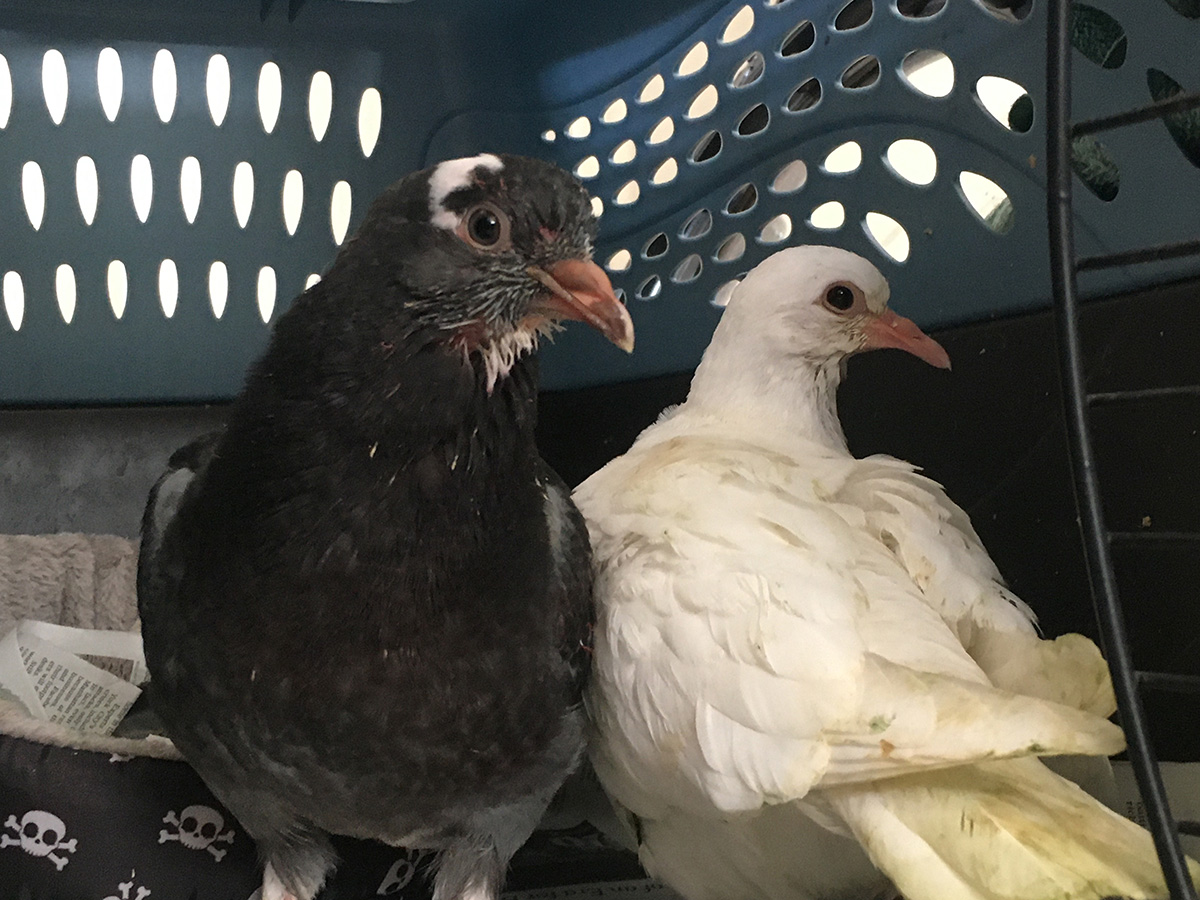
The first days after rescue
The first picture shows all the parts used. A glove, a rubber band, an X-Acto knife, and an empty salad dressing bottle. I took the little insert out of the bottle and enlarged the hole with the X-Acto knife. (and I smoothed any sharp edges with an emery board). then stretched a glove over the top, rubberbanded it tight, and then slit it with the X-Acto blade. I warmed the bottle to approximately 100°, in the sink by putting the bottle in a container, and then running hot tap water over it, and checking the temp with a probe thermometer. (Important Warning: Never microwave or cook formula to be fed to birds! And take care never to crop or tube feed even hot water formula. Crop burns injure & eventually kill far too many human-fed birds.)
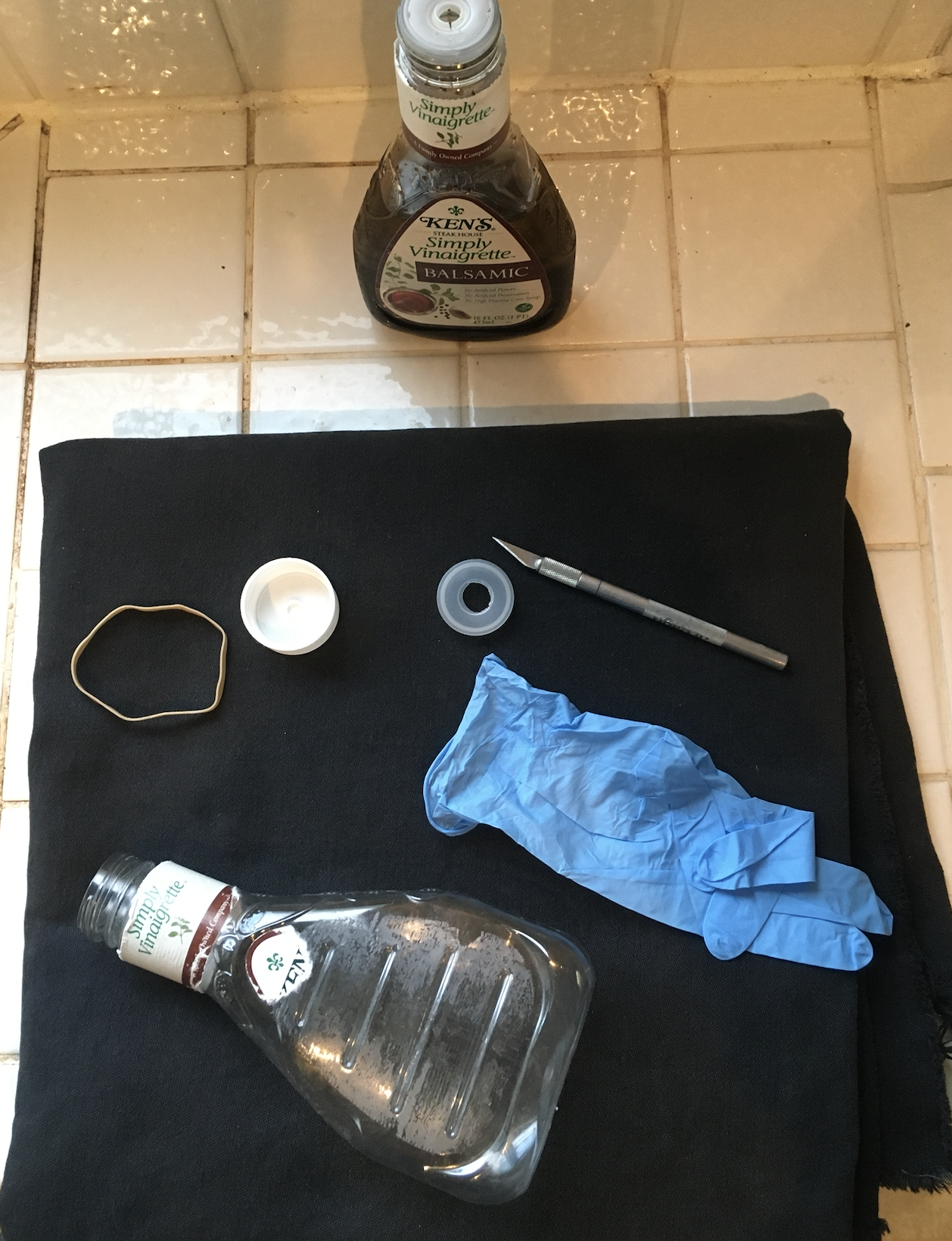
Melne’s baby bottle for hand-feeding the fledglings
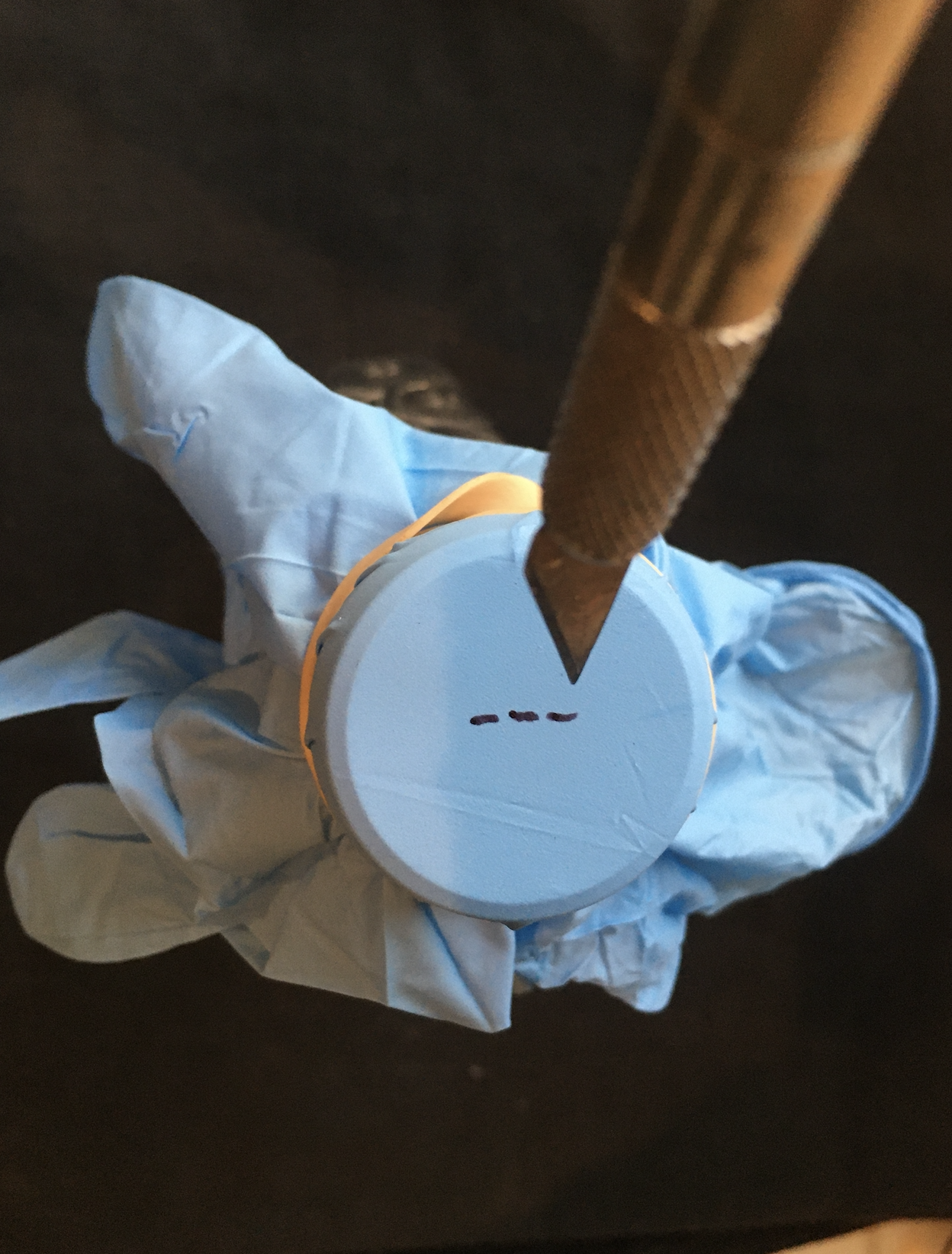
Cutting a slit into the rubber glove top allows the pigeon child to put her face into the opening as if it were a pigeon parent’s throat
After a week of calling them Dark and White, it was time for names. I had been classmates with a violin-playing Persian woman named Shirin and thought it a lovely name. I decided White (presumed female) would be Shirin, and then searched for an appropriate Persian name for Dark (presumed male). I settled on Kian. Shirin means sweet, and Kian means king.
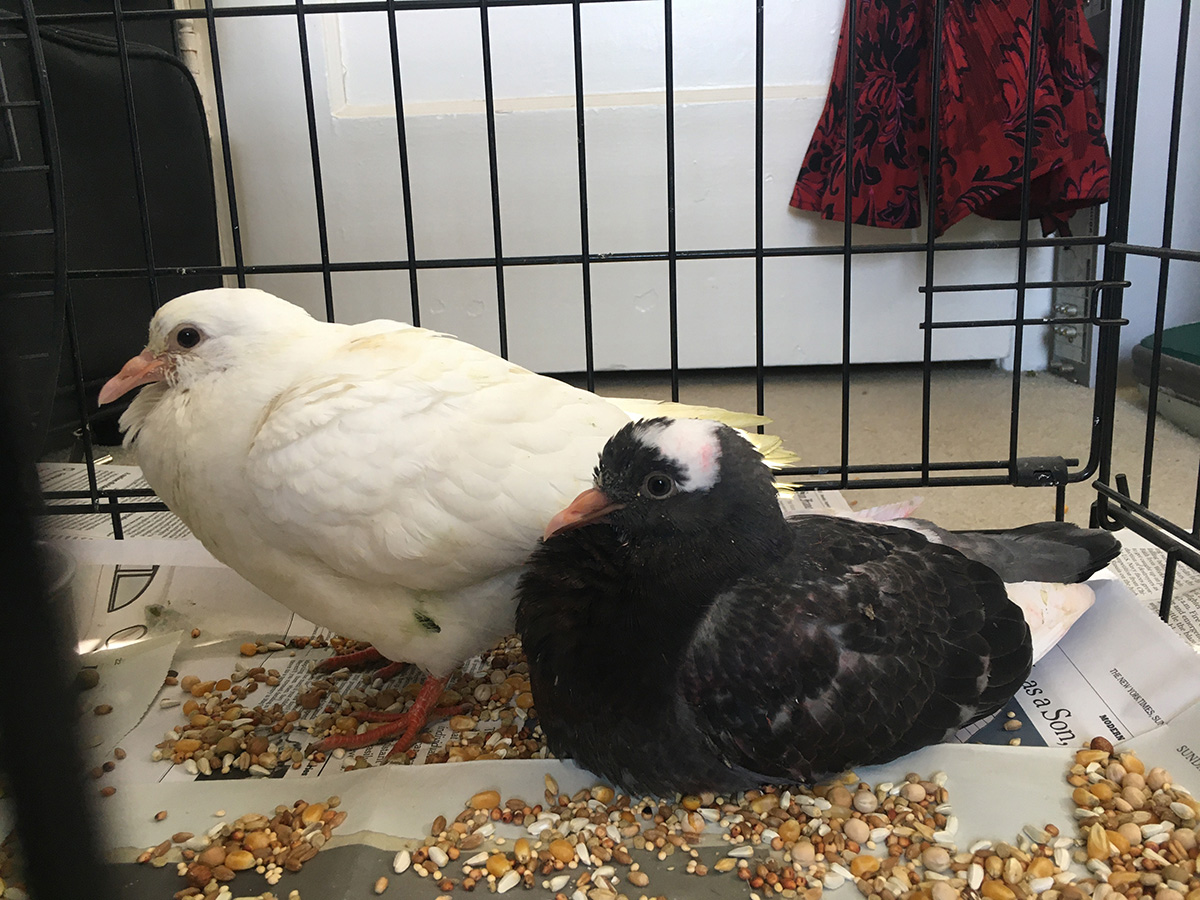
Still recovering from their ordeal & earning to self-feed
A problem with King pigeons–birds raised for “food”—is they often come with embedded health problems. Why raise a bird to be healthy if it’s not even supposed to live past 4-5 weeks?
Between the two, there was a veritable roller coaster of health issues, veterinary visits and hospitalizations. Shirin’s health seemed especially fragile, with respiratory infection, and the doctor posited that she might be immunosuppressed. Kian, while outwardly healthier looking than his “sister” (I do not actually know if they are related), exhibited yellow urates that indicated liver trouble. Both ended up on a cocktail of medications.
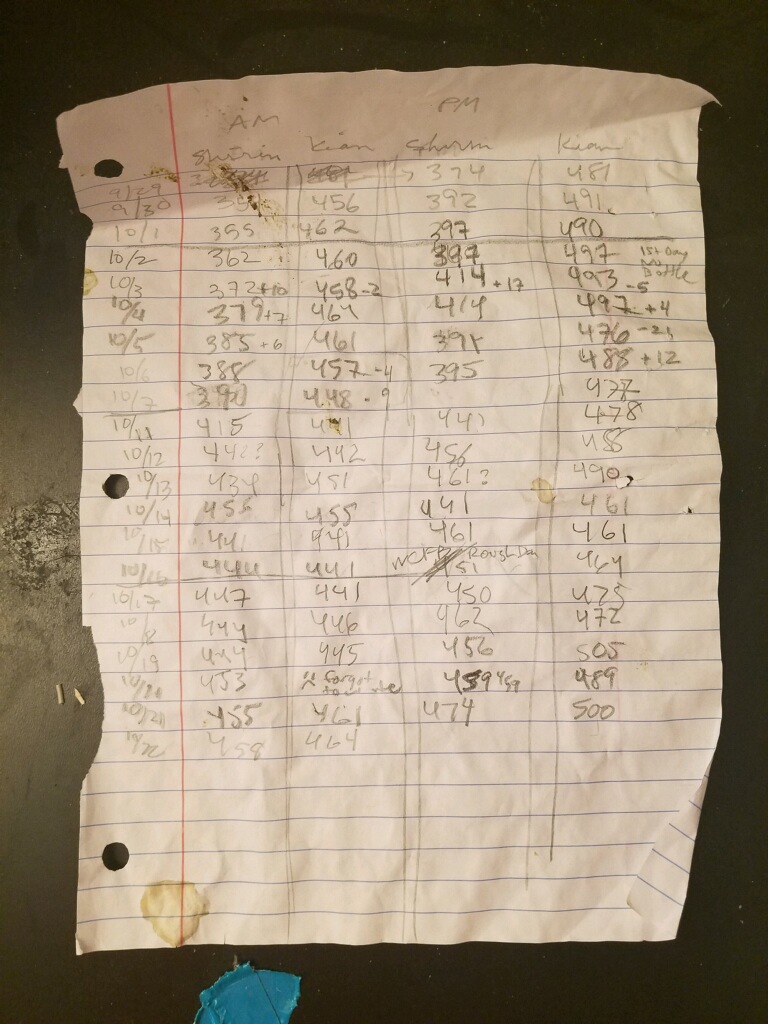
Melne took meticulous care of the babies & kept detailed notes on their meds & weights
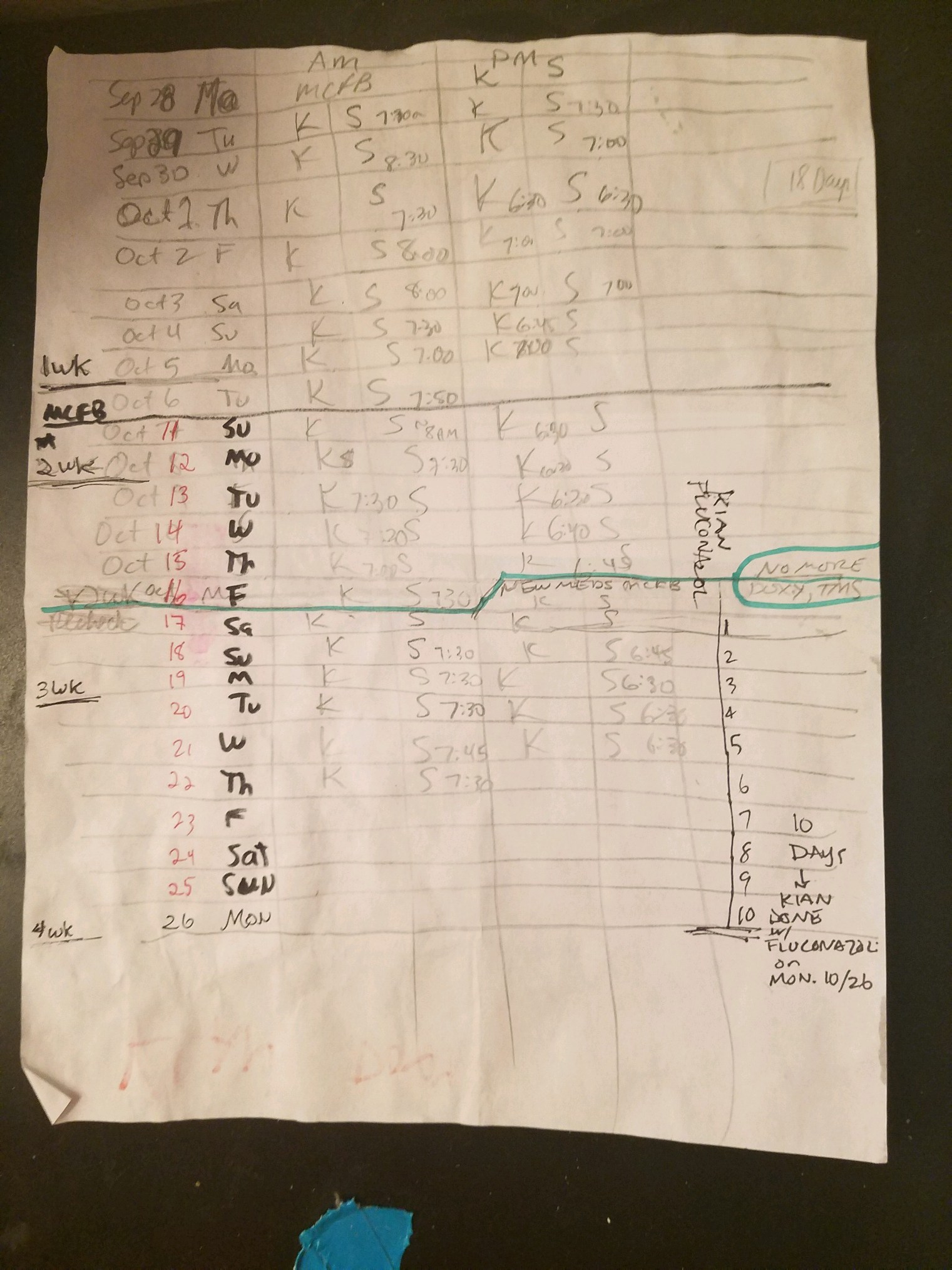
But both began to improve—Shirin began to finally put on weight—eventually catching up with her brother. And Kian, always the healthier of the two, was putting his few health issues behind him, as well.
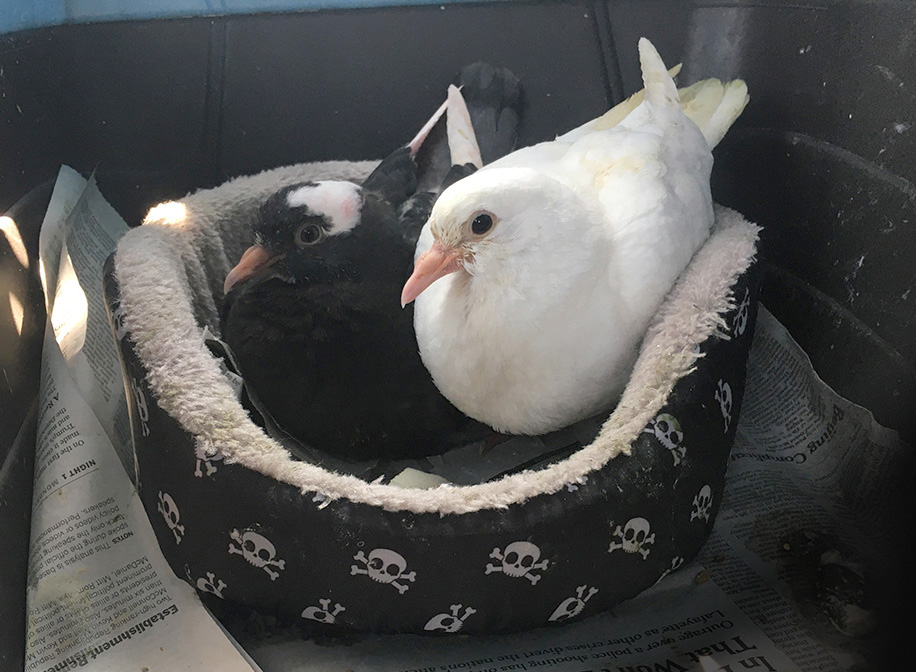
Kian & Shirin on their way to one of many appointments at Medical Center for Birds
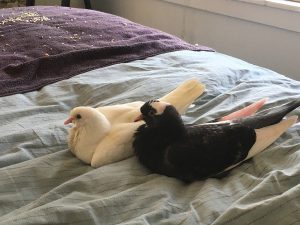
Lounge masters
Just a couple weeks after their rescue, they met their future adopter, Jack, who was really taken with the pair. Although he was ready to adopt right then, he had to be patient while the babies weaned and got through their medical issues.
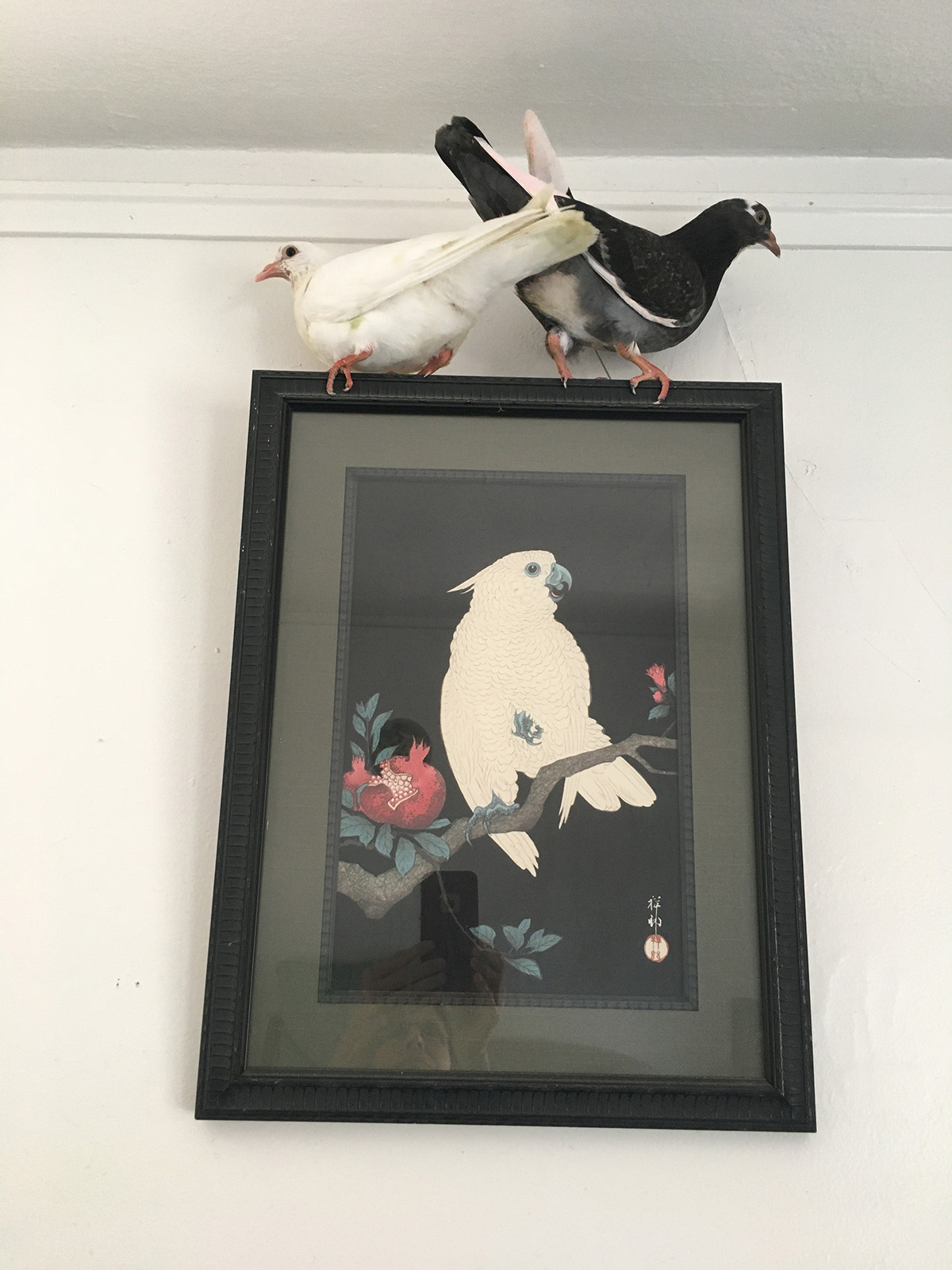
Play time
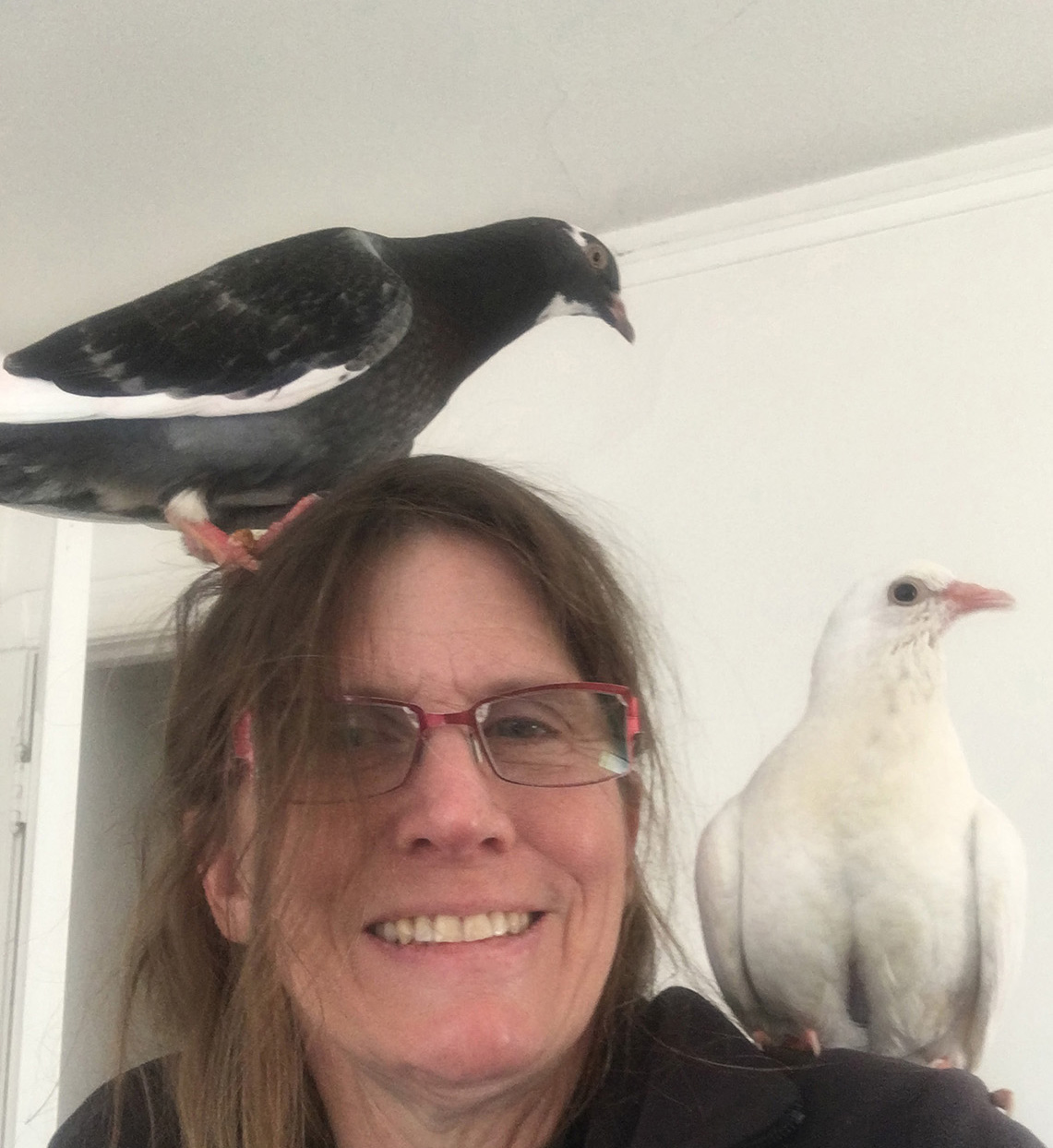
Melne with babies
It took an additional three weeks, but finally, on October 22, Shirin and Kian went HOME! I miss them, but I know they are safe and loved.
Foster to adopt Jack writes, They are doing great! Little by little Shirin is coming out of their shell and Kian continues to be as bold as ever. They are getting used to the pigeon pants and are starting to fly around the house in them. Their lesions have healed except for one that’s nearly gone on Shirin’s toe. There has been frustrating parts caring for them, but overall it’s been an amazing experience.

Jack welcomes Shirin
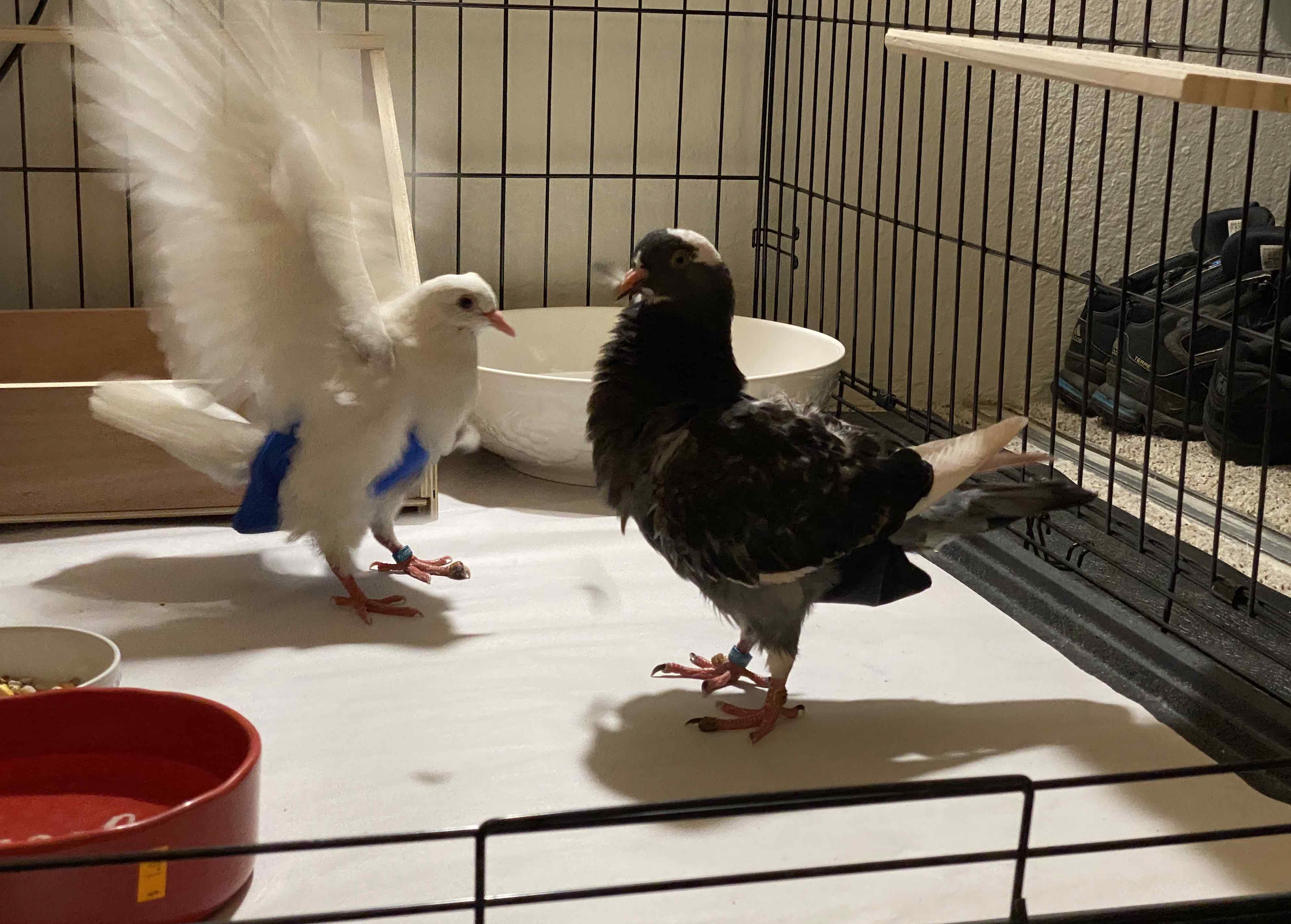
Shirin & Kian’s first night at Jack’s
I couldn’t be happier that I was miraculously in the right place at the right time to intervene, get them off the street, and spend six weeks mothering them, loving them and watching them grow into their sweet and beautiful selves. They are a very special pair of birds! I hope they have a very happy and healthy life with their new pigeon-parent, Jack.
What are the chances that someone who knew pigeons and recognized their plight would come across those two birds that night? Almost infinitesimal. And the chances of catching both birds? Better odds, but those odds were still long. A bettin’ man wouldn’t have put two cents on that outcome. But these two birds beat the odds and won the lottery.
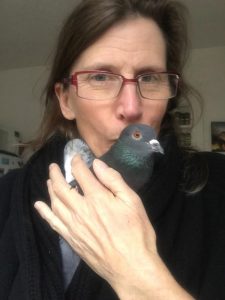 Melne developed an interest in pigeons after observing and interacting with a feral flock, which led her to volunteering for Palomacy. She soon welcomed pigeon pets into her home, and now lives with two married Palomacy rescue pigeons, Roy and Shae, and two very naughty rescue green-cheeked conures, Cheeky and Sage. She is a graphic designer, guitarist and songwriter (author of the pigeon-world-famous “W.A.P.” parody starring Kian!). She is a member of the Oakland-based art-punk band Surplus 1980, and also plays casual gigs in a variety of styles ranging from pop and rock to jazz and R&B. She is currently pursuing a B.A. in Jazz Studies at the California Jazz Conservatory.
Melne developed an interest in pigeons after observing and interacting with a feral flock, which led her to volunteering for Palomacy. She soon welcomed pigeon pets into her home, and now lives with two married Palomacy rescue pigeons, Roy and Shae, and two very naughty rescue green-cheeked conures, Cheeky and Sage. She is a graphic designer, guitarist and songwriter (author of the pigeon-world-famous “W.A.P.” parody starring Kian!). She is a member of the Oakland-based art-punk band Surplus 1980, and also plays casual gigs in a variety of styles ranging from pop and rock to jazz and R&B. She is currently pursuing a B.A. in Jazz Studies at the California Jazz Conservatory.
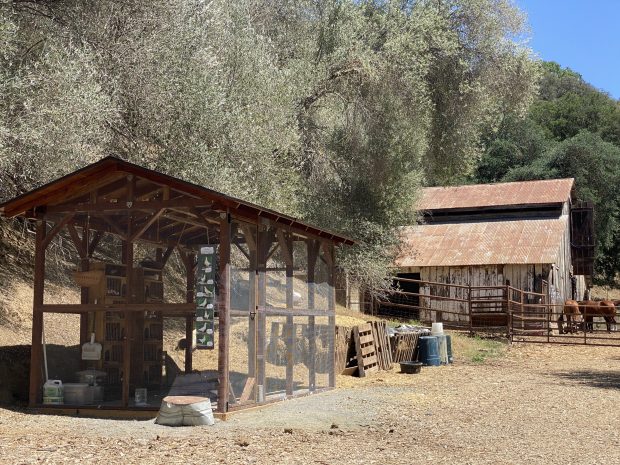
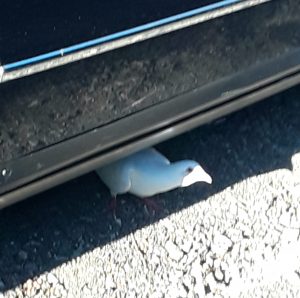
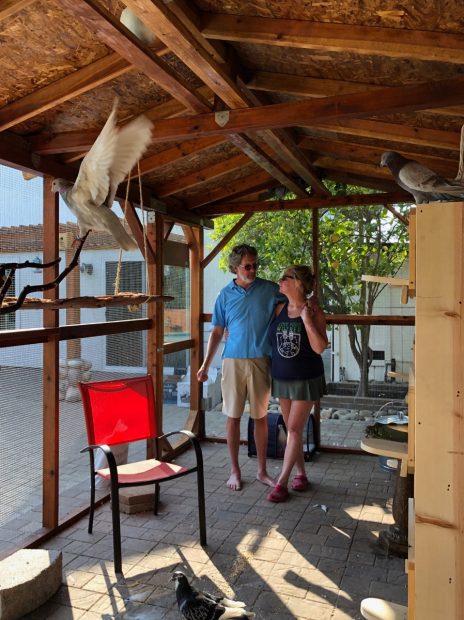
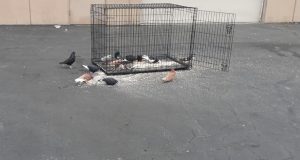
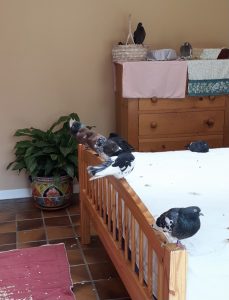
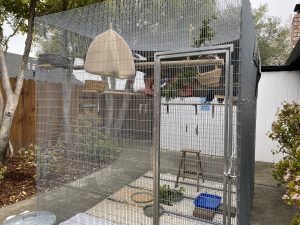

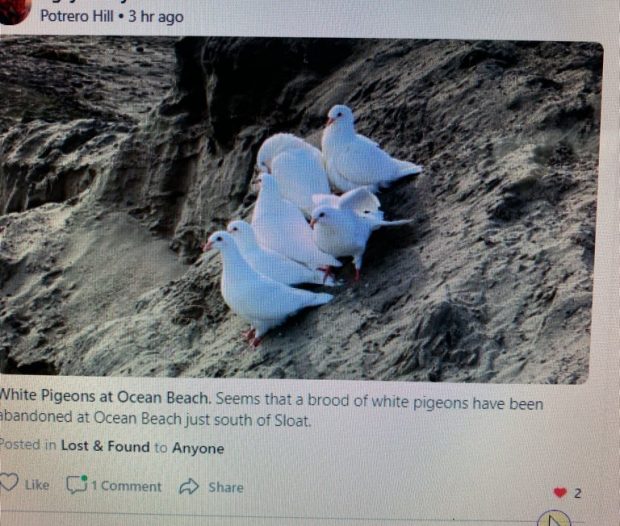
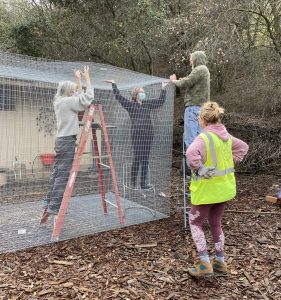
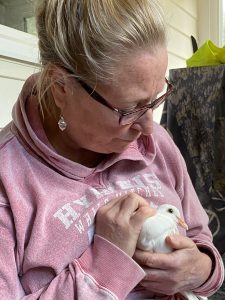
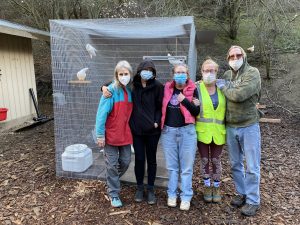
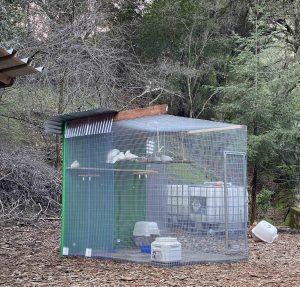
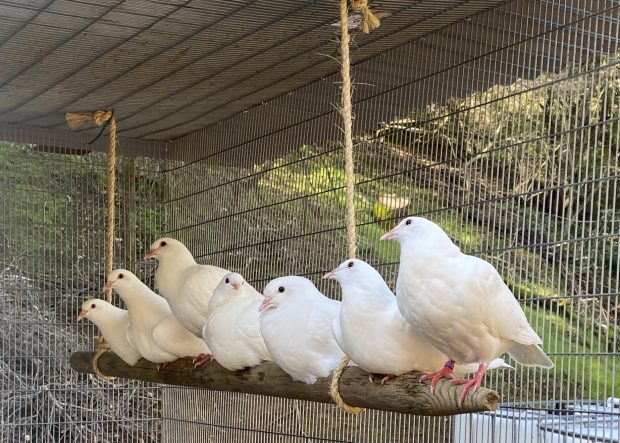
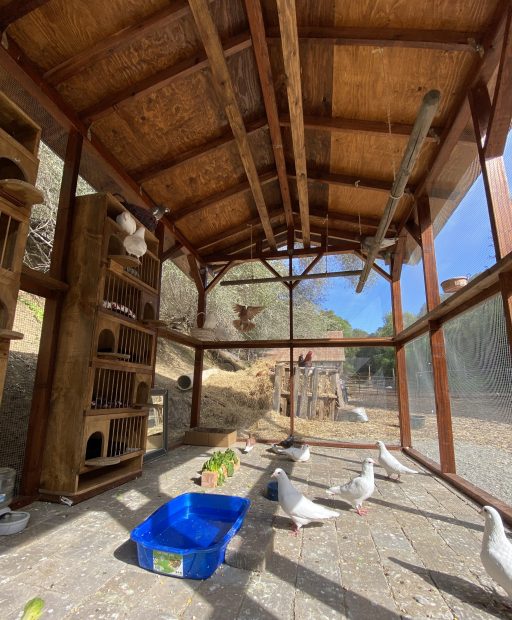
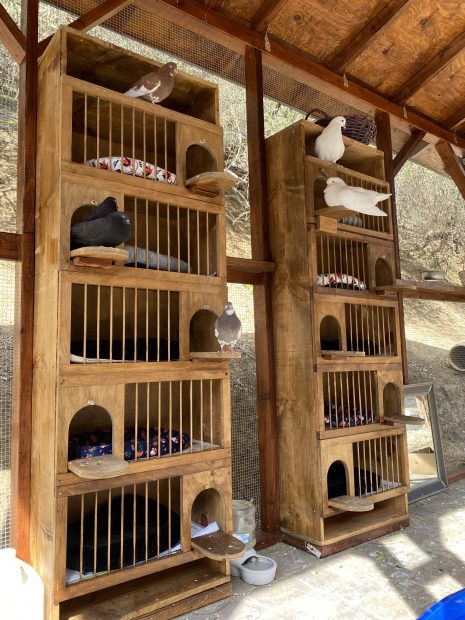
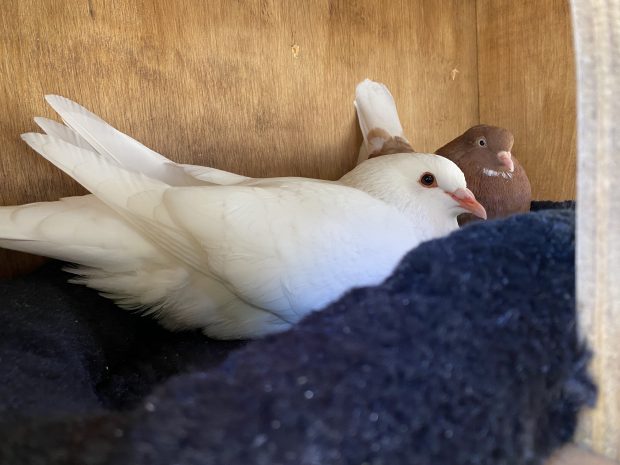
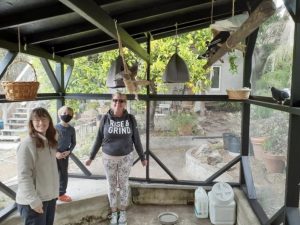


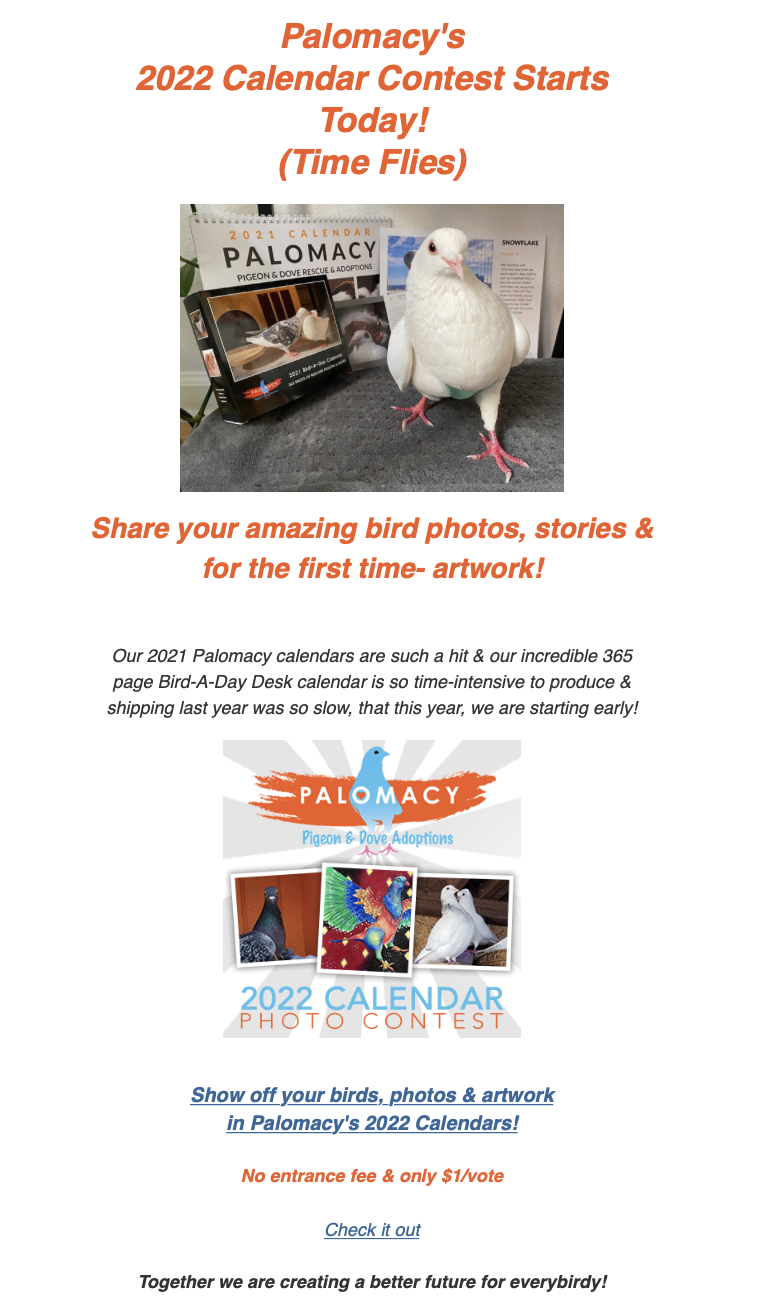

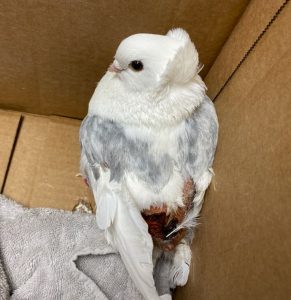
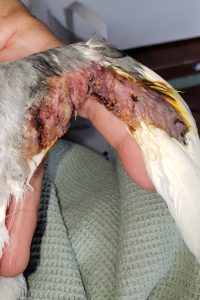
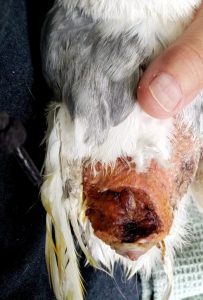
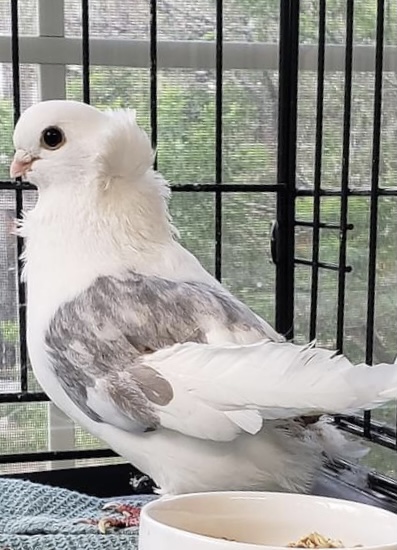
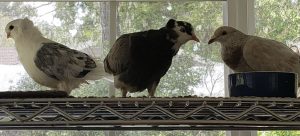
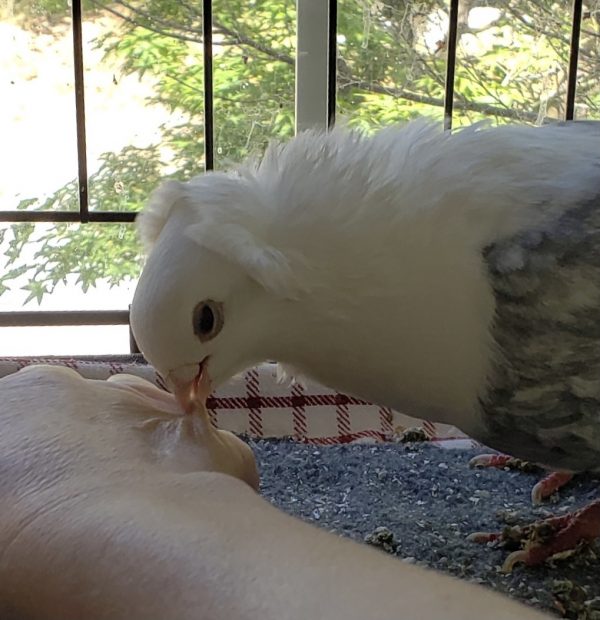
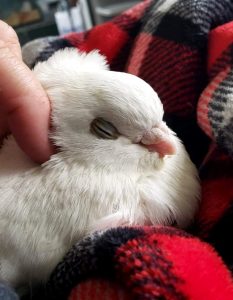
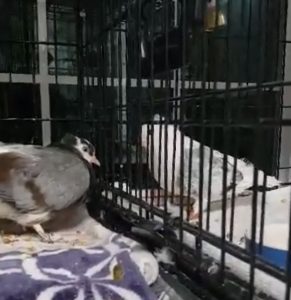

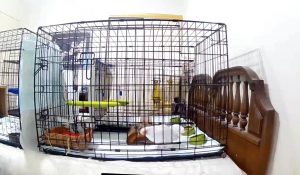
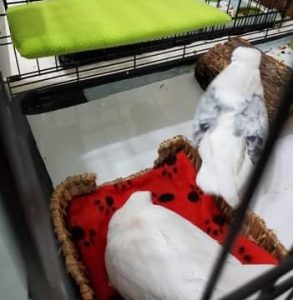
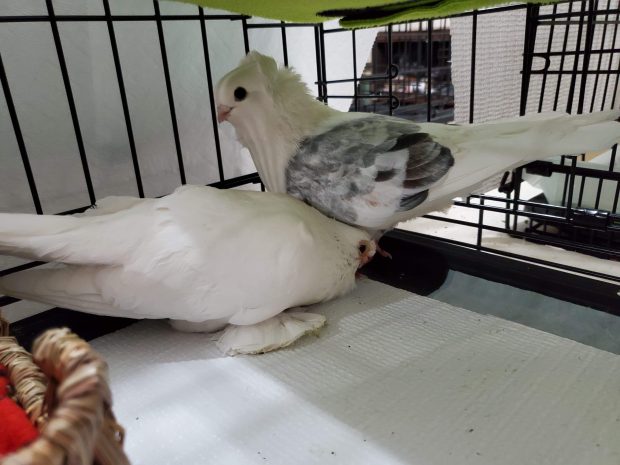
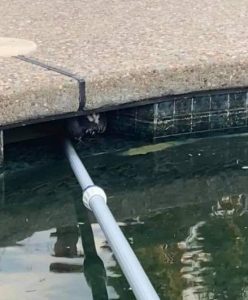

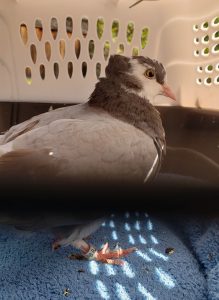
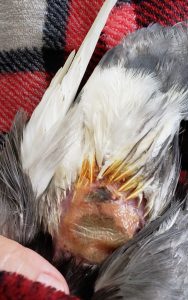
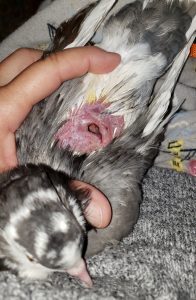
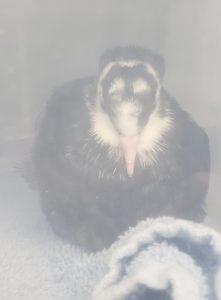
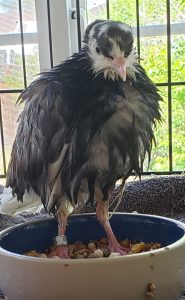
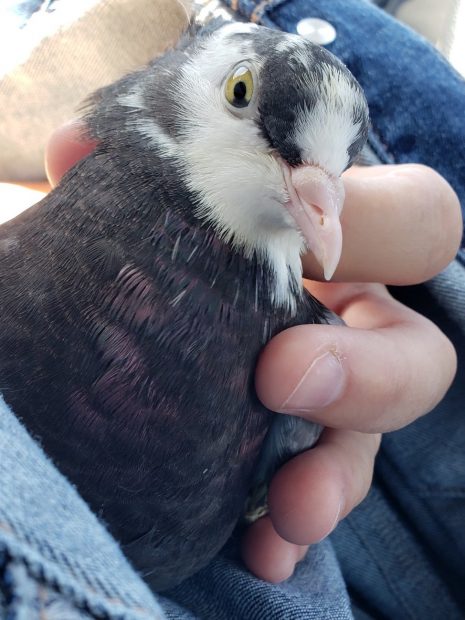
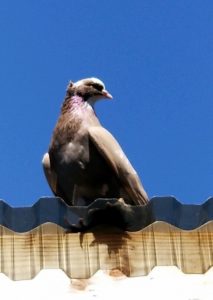
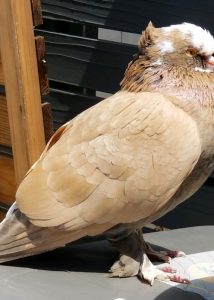
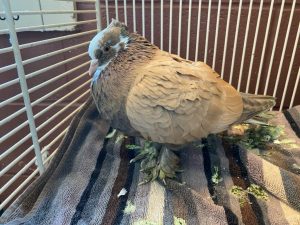
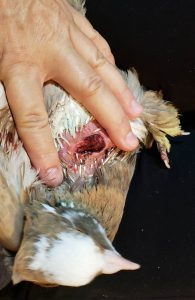
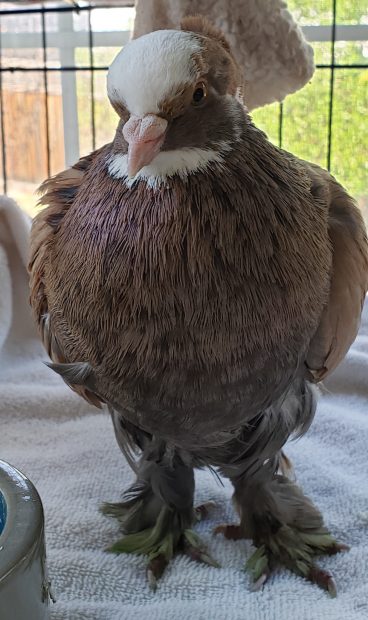
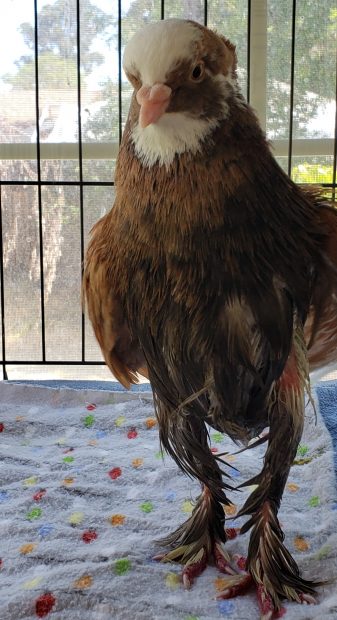
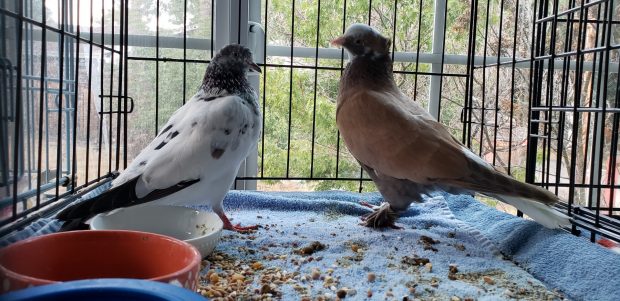
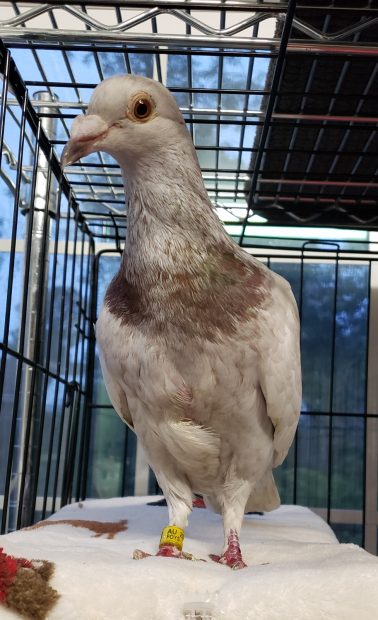
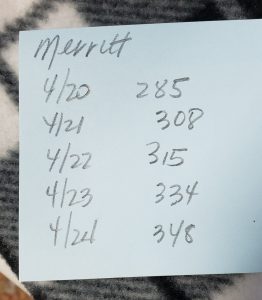
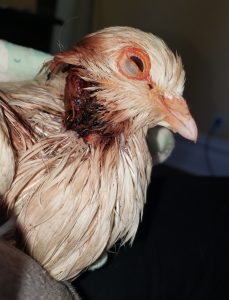
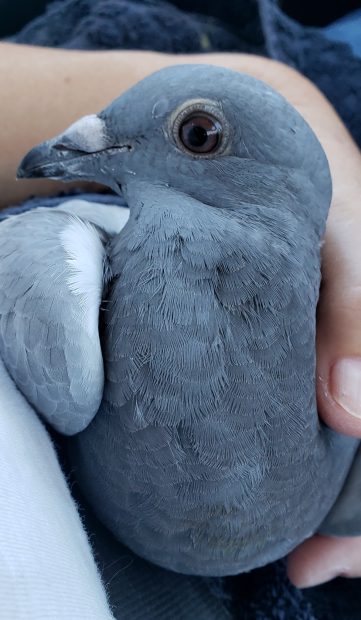

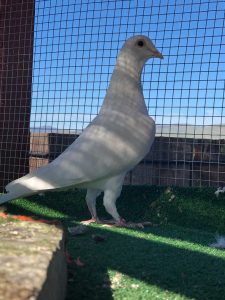
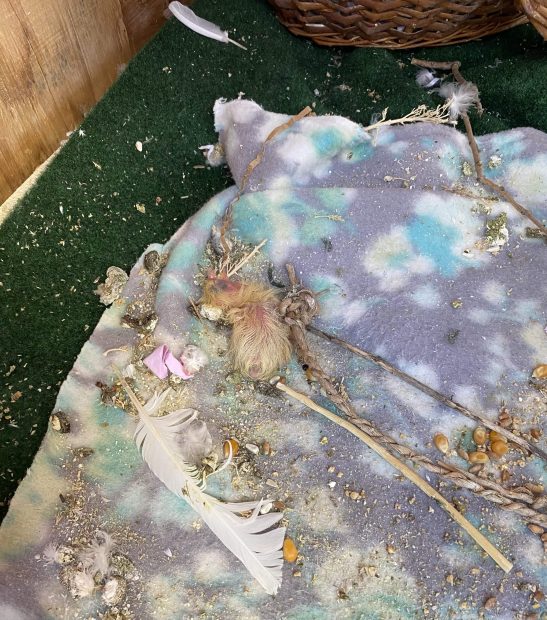

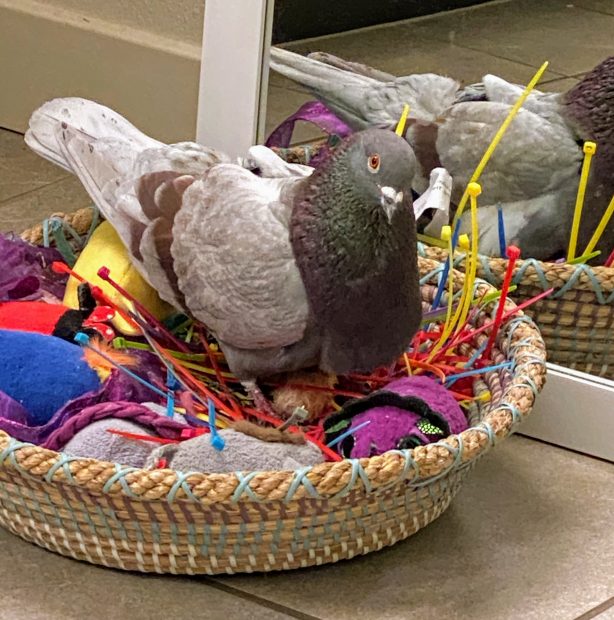
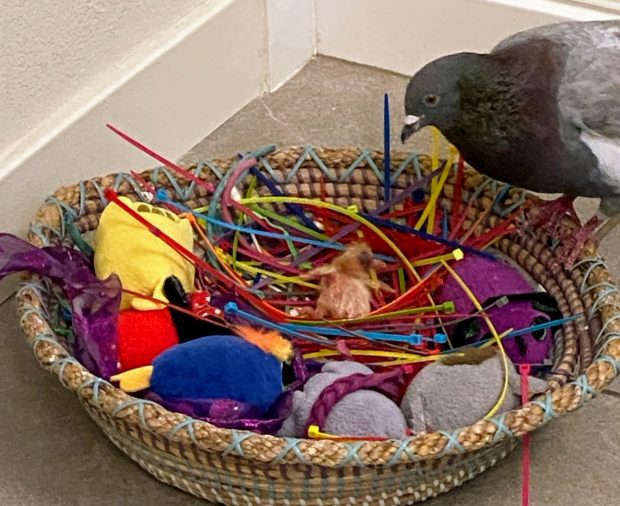
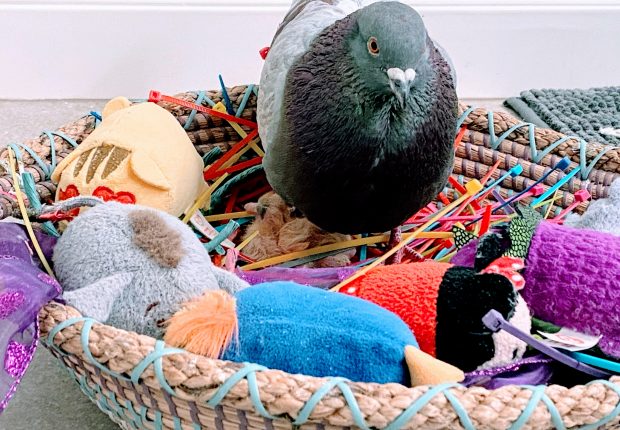
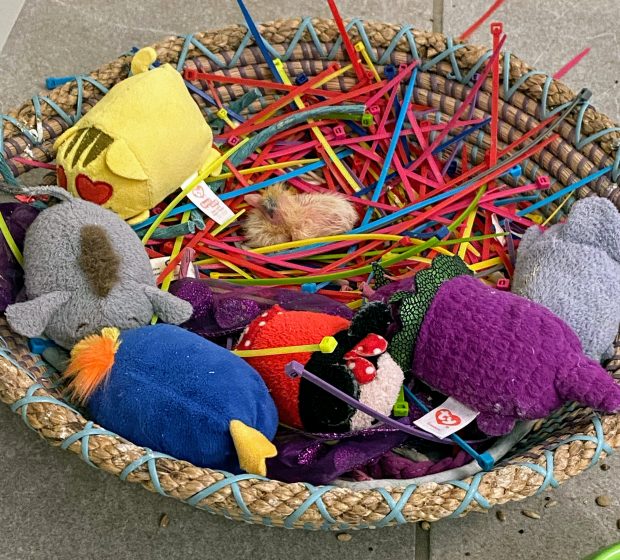
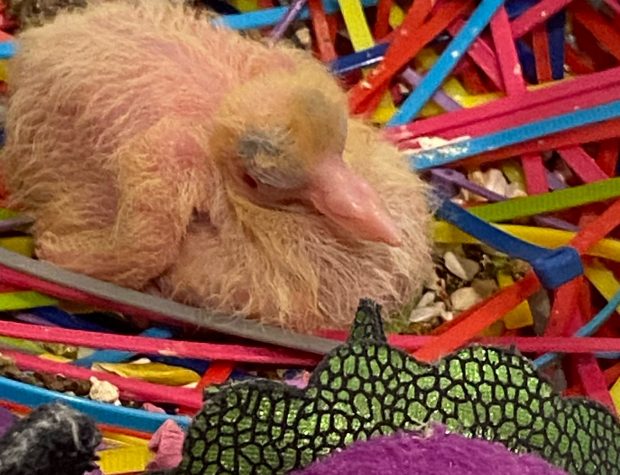
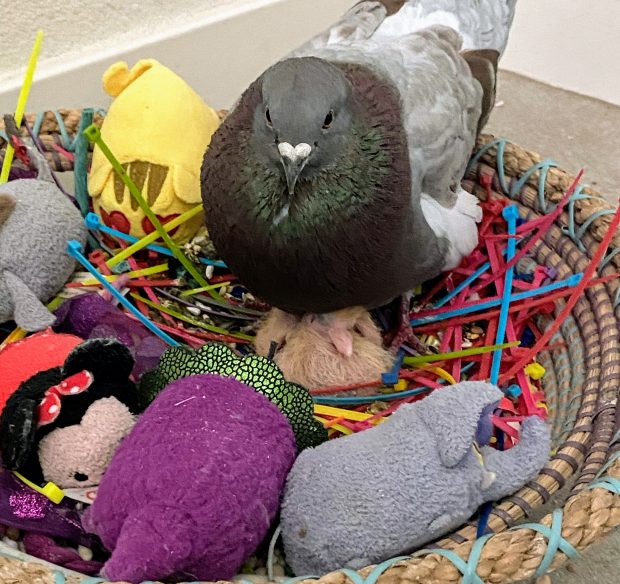

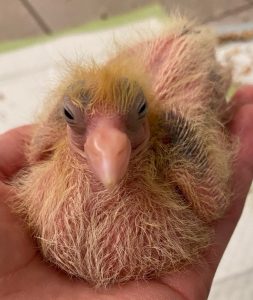

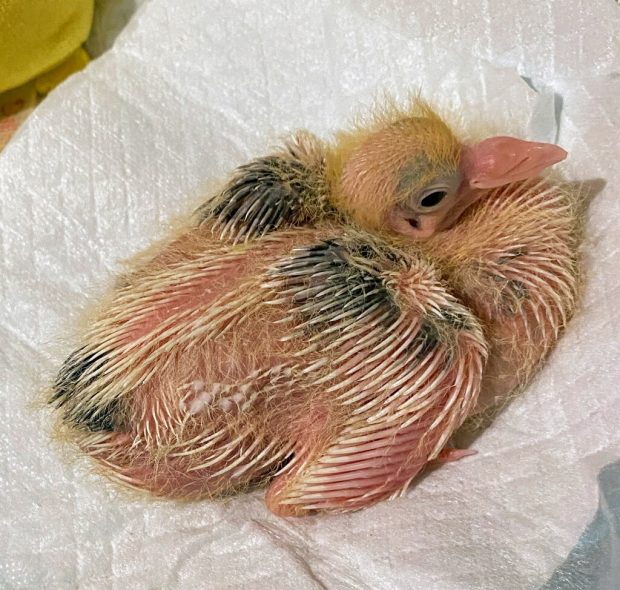
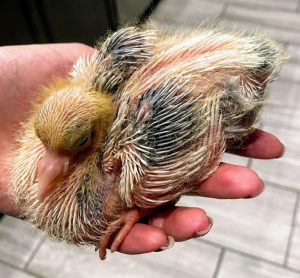

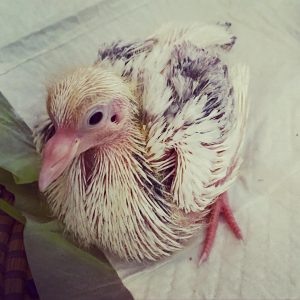
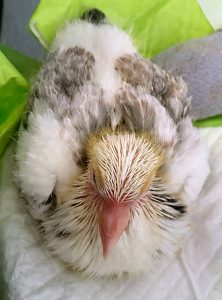
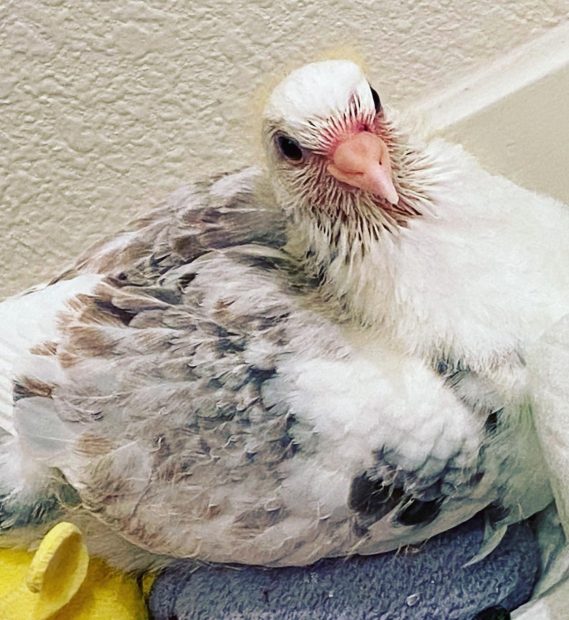
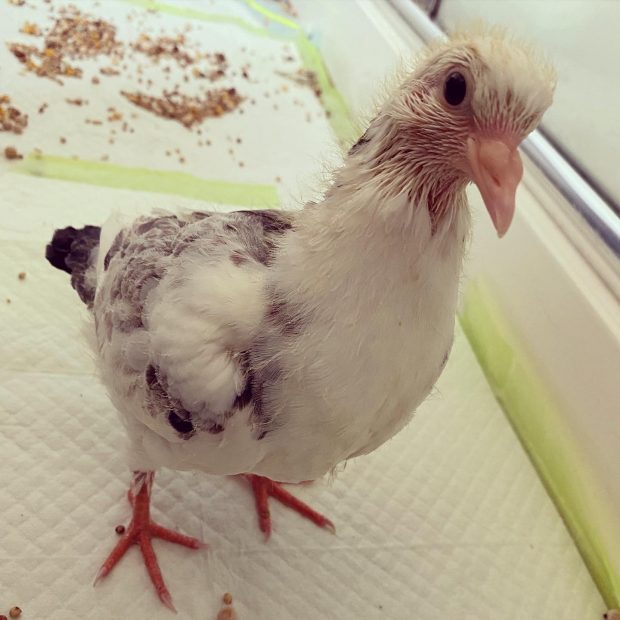
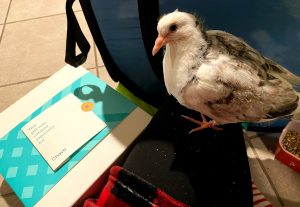
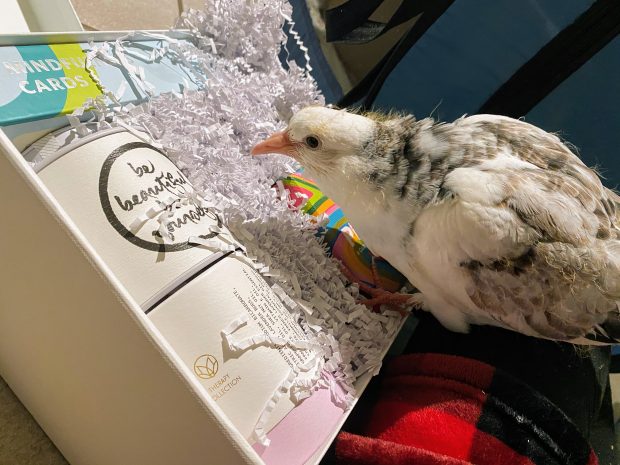
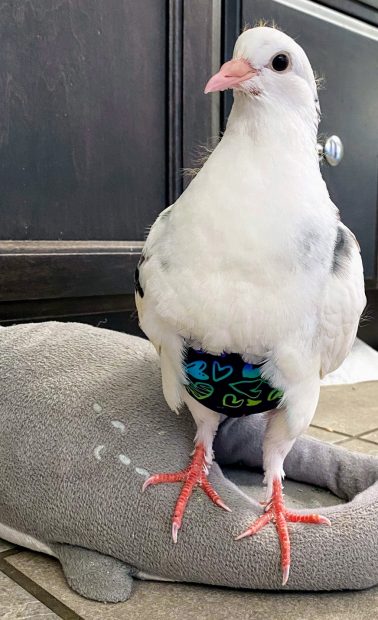
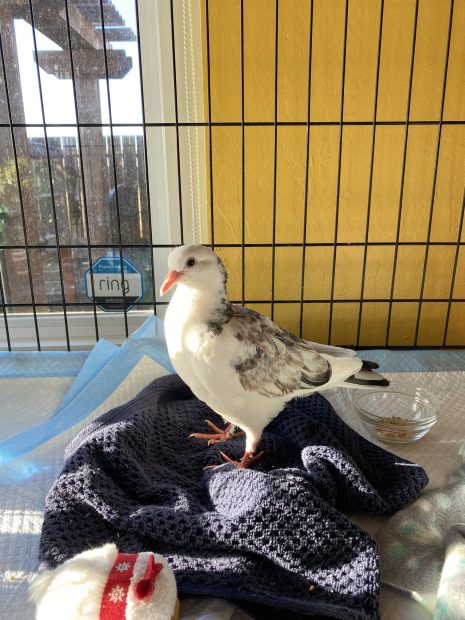
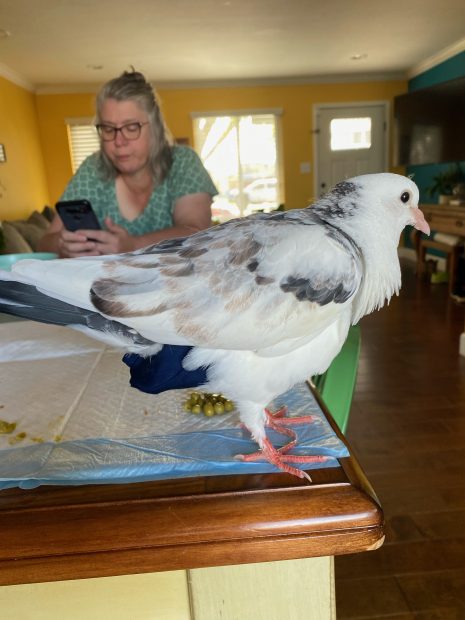
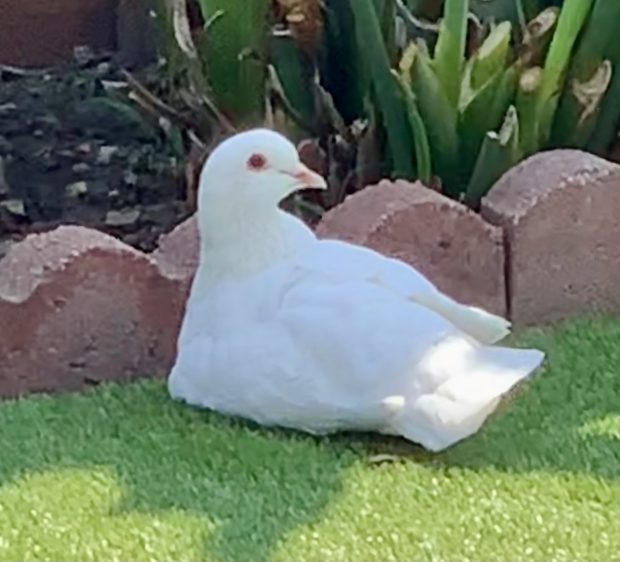
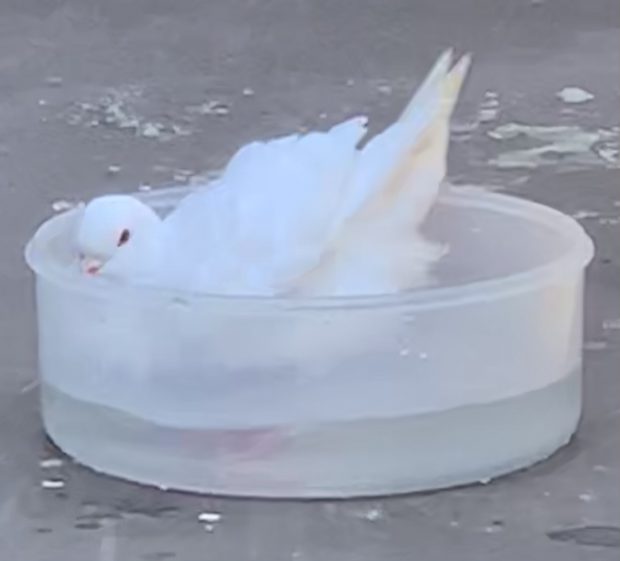
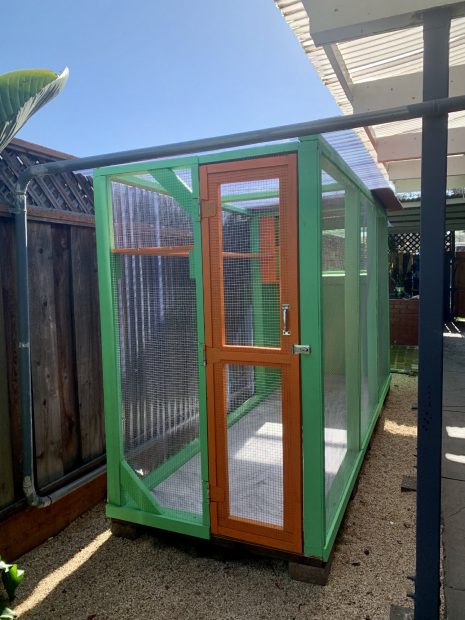
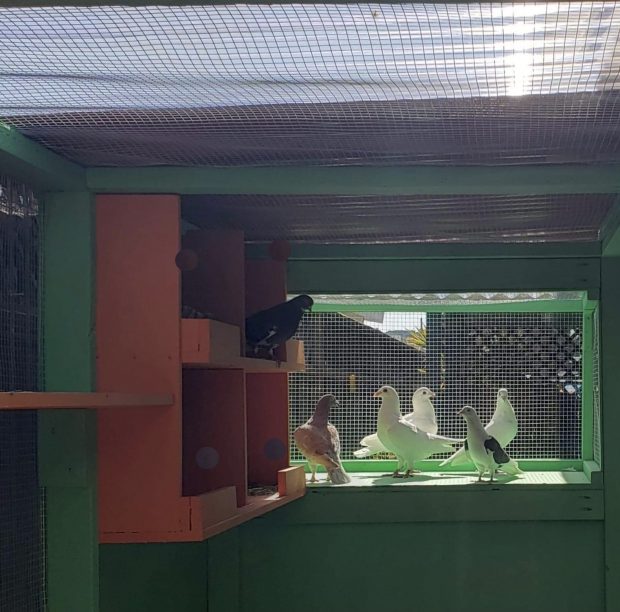
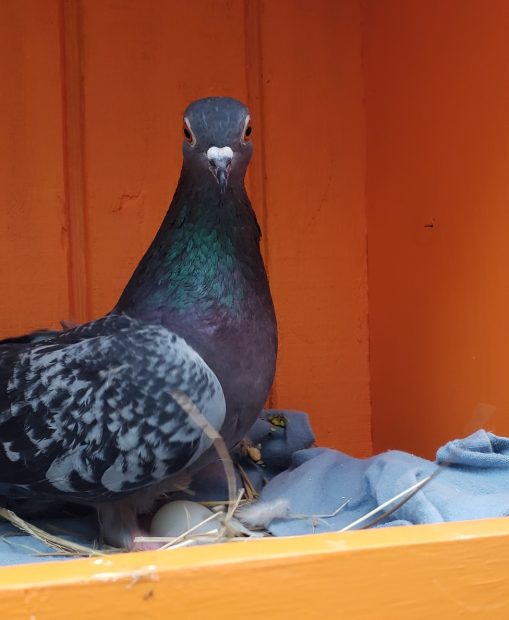
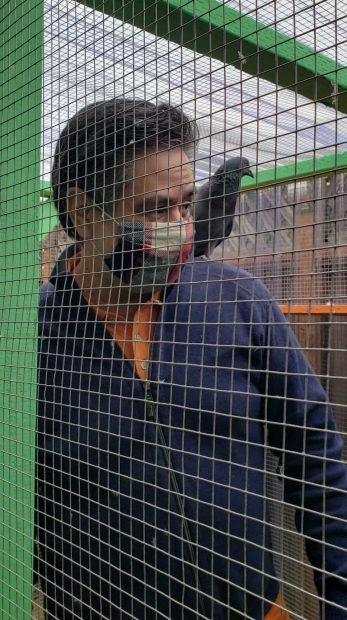
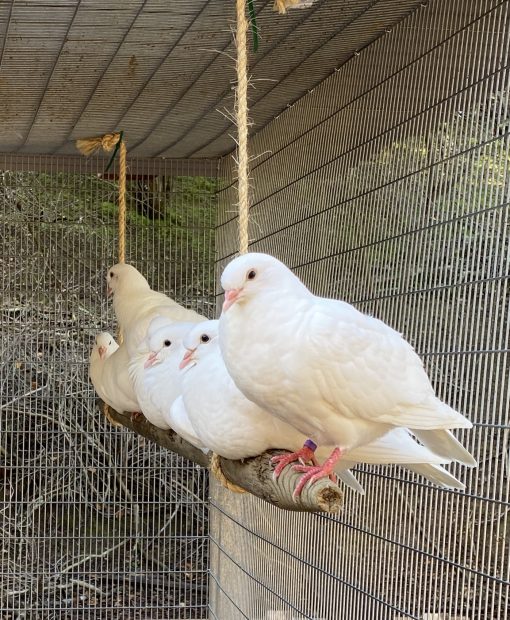
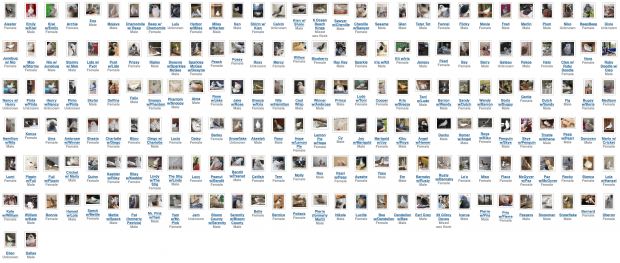
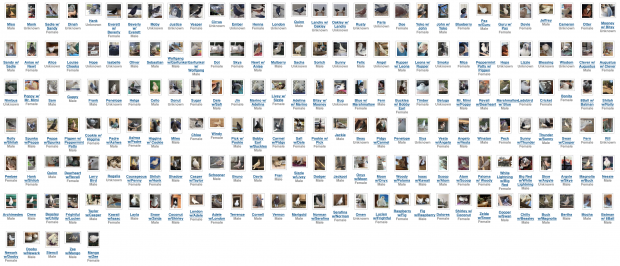
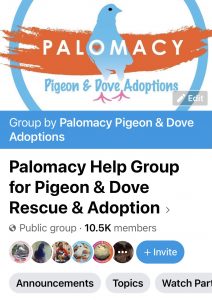
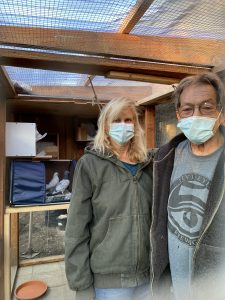

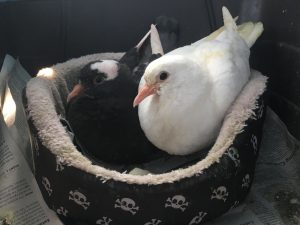
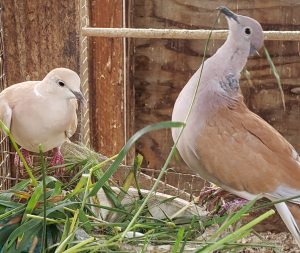
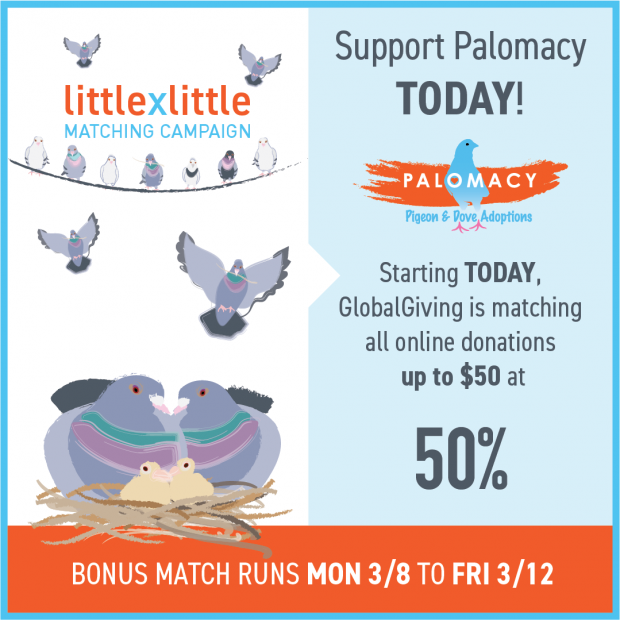
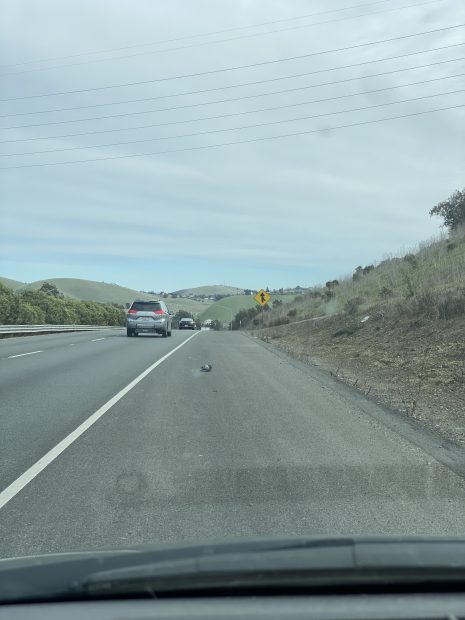
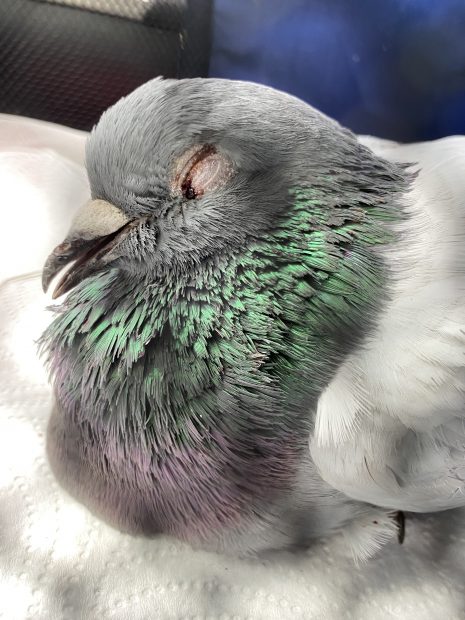
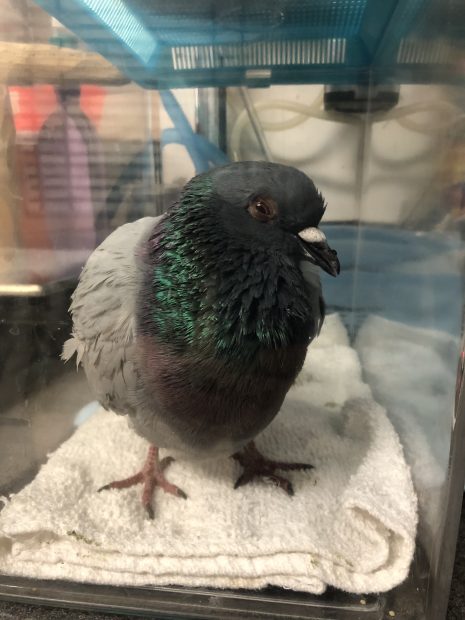
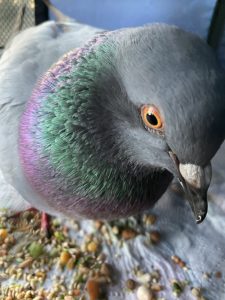
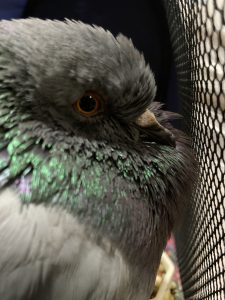

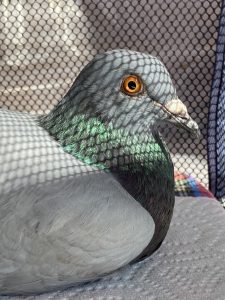
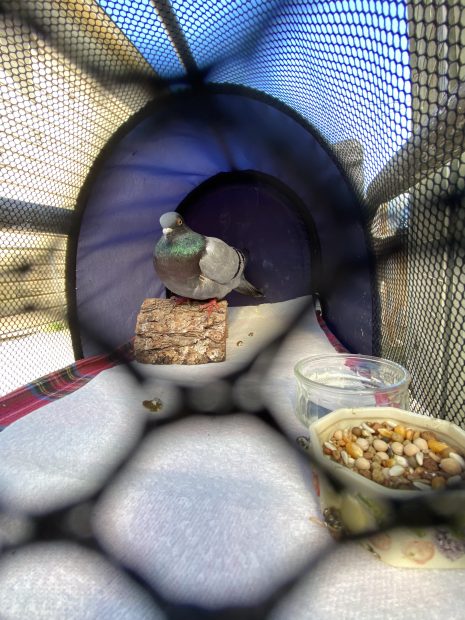
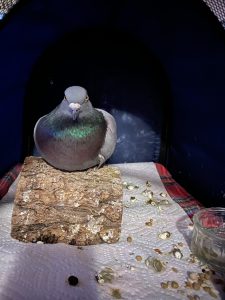
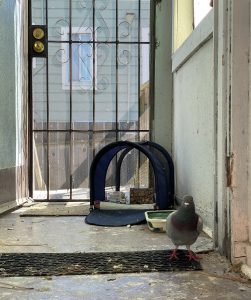
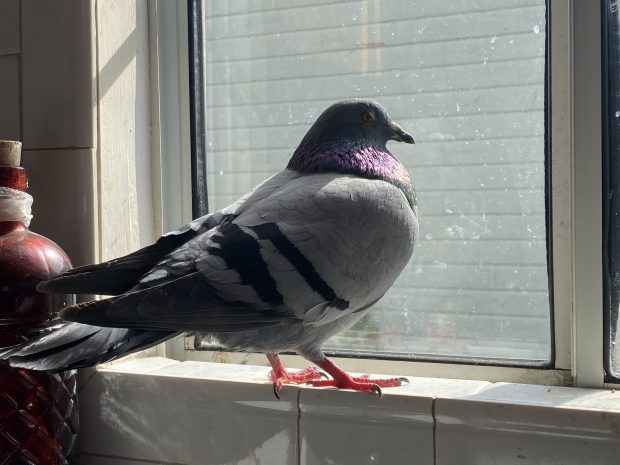
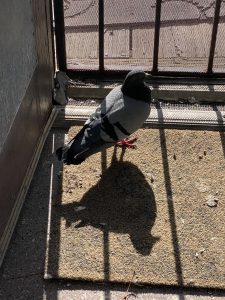
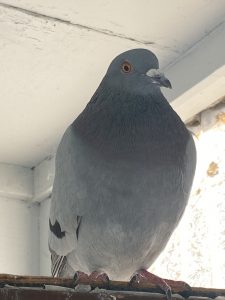
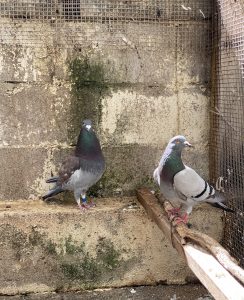
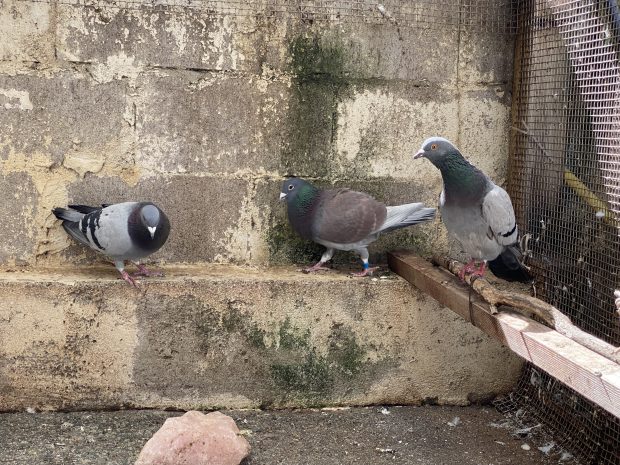
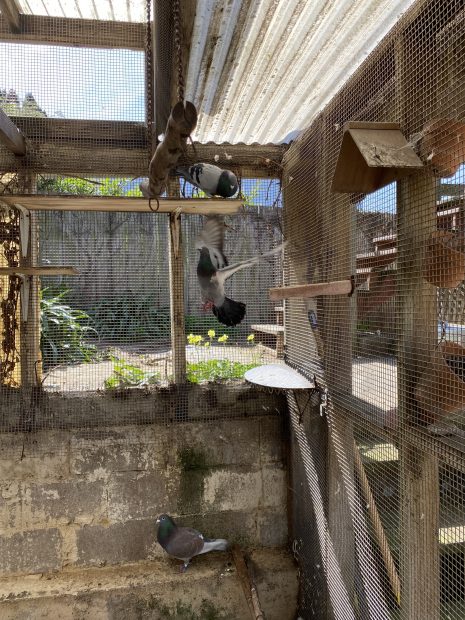
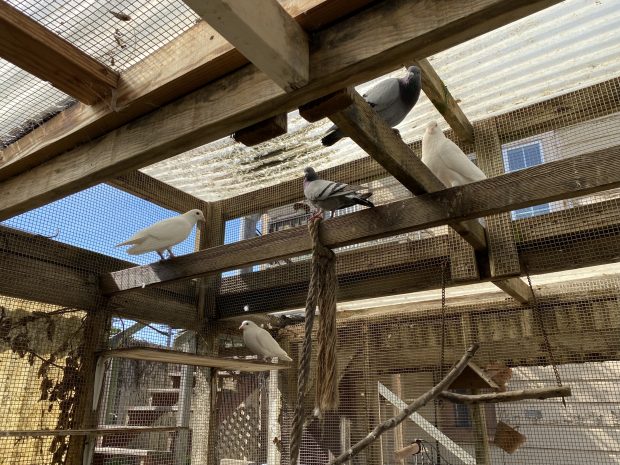

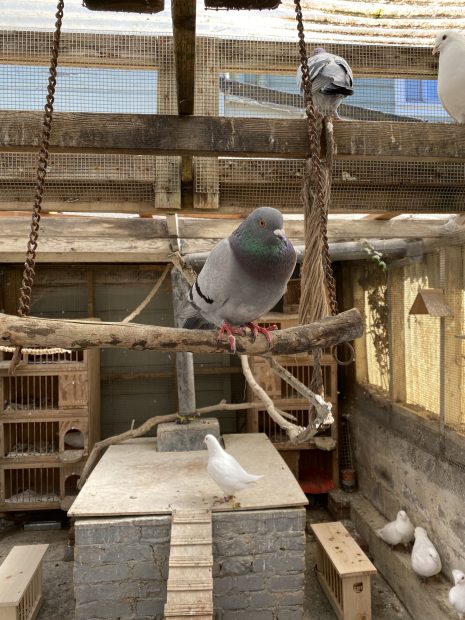


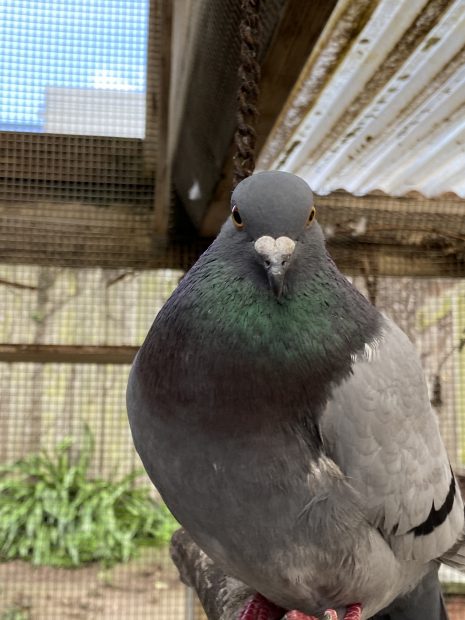
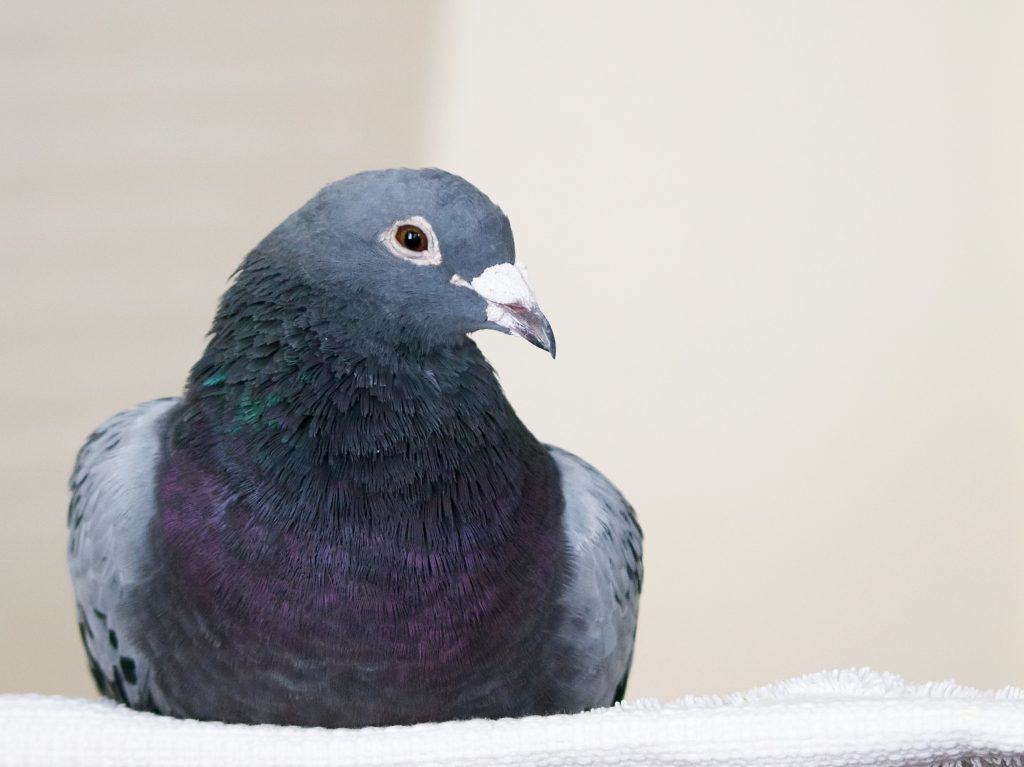
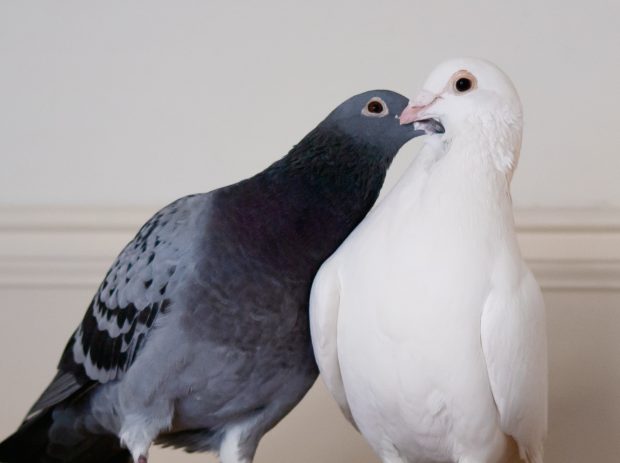

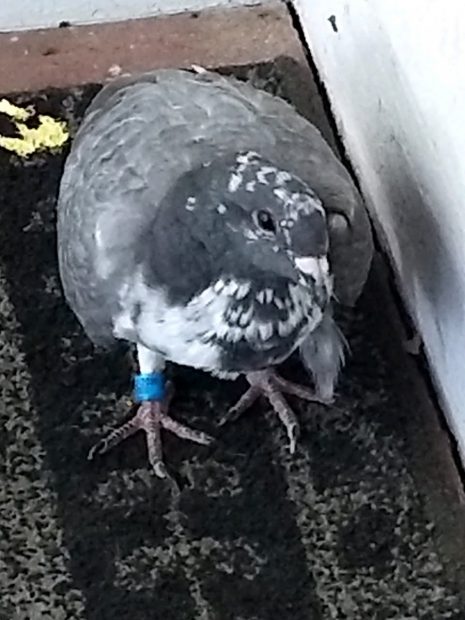
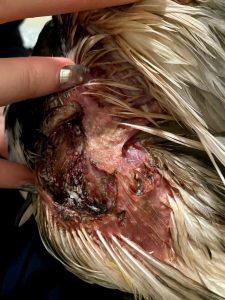
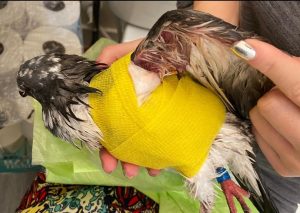
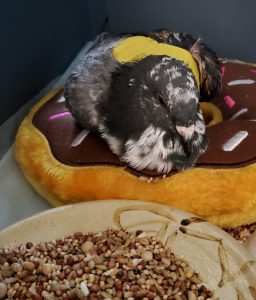
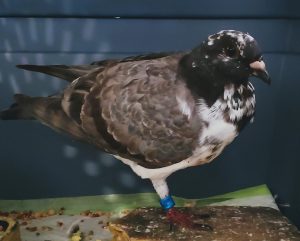
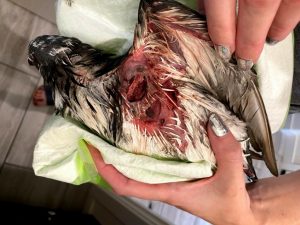
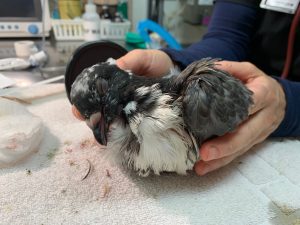
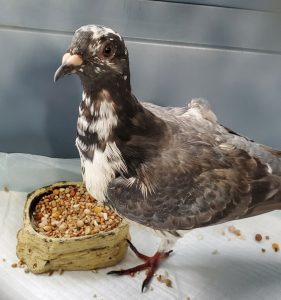
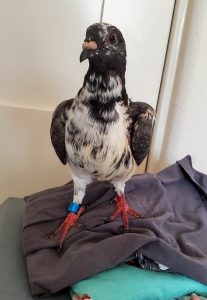
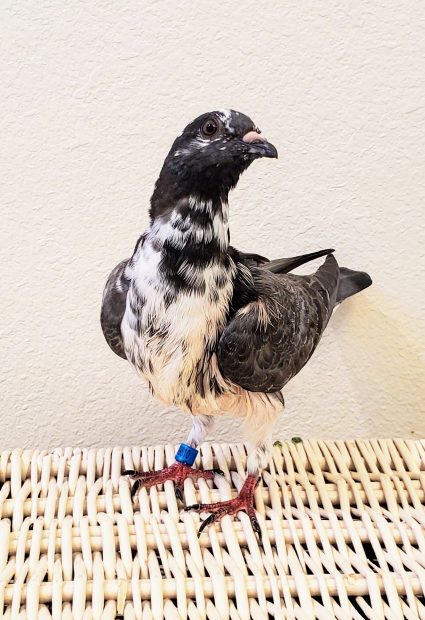
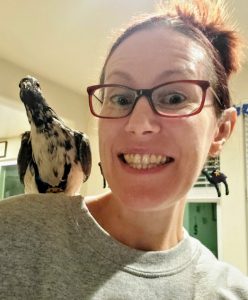
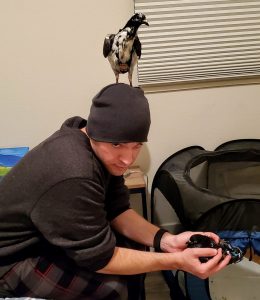
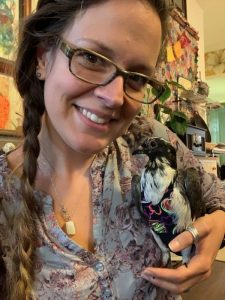
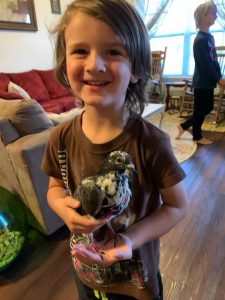
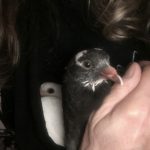


















 Melne
Melne